Europe, Part 2: Paris, The City that Captivates
— Europe — 8 min read
April 4 - 20, 2011
During the second part of my stay in Paris, I went out and did a few of the typical touristy things that Paris is famous for. Being the most visited city in the world seems far removed from the remoteness of the Bolivian Altiplano, but the throngs of tourists can't hide the beauty of this captivating city.
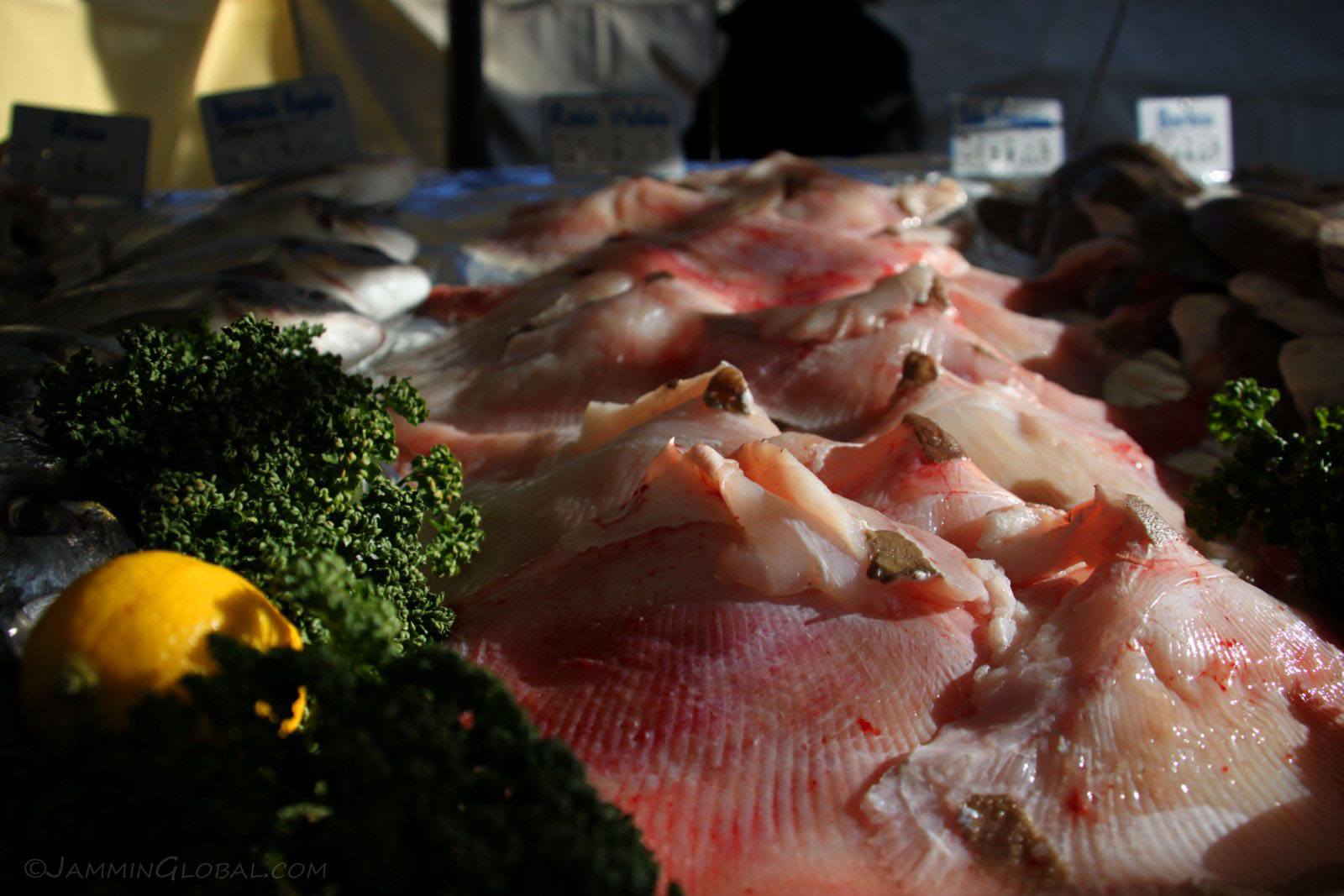
I walked by this fresh food market in the 14th arrondisement, where I was staying and captured the variety of seafood that was on display. This is a type of ray fish.
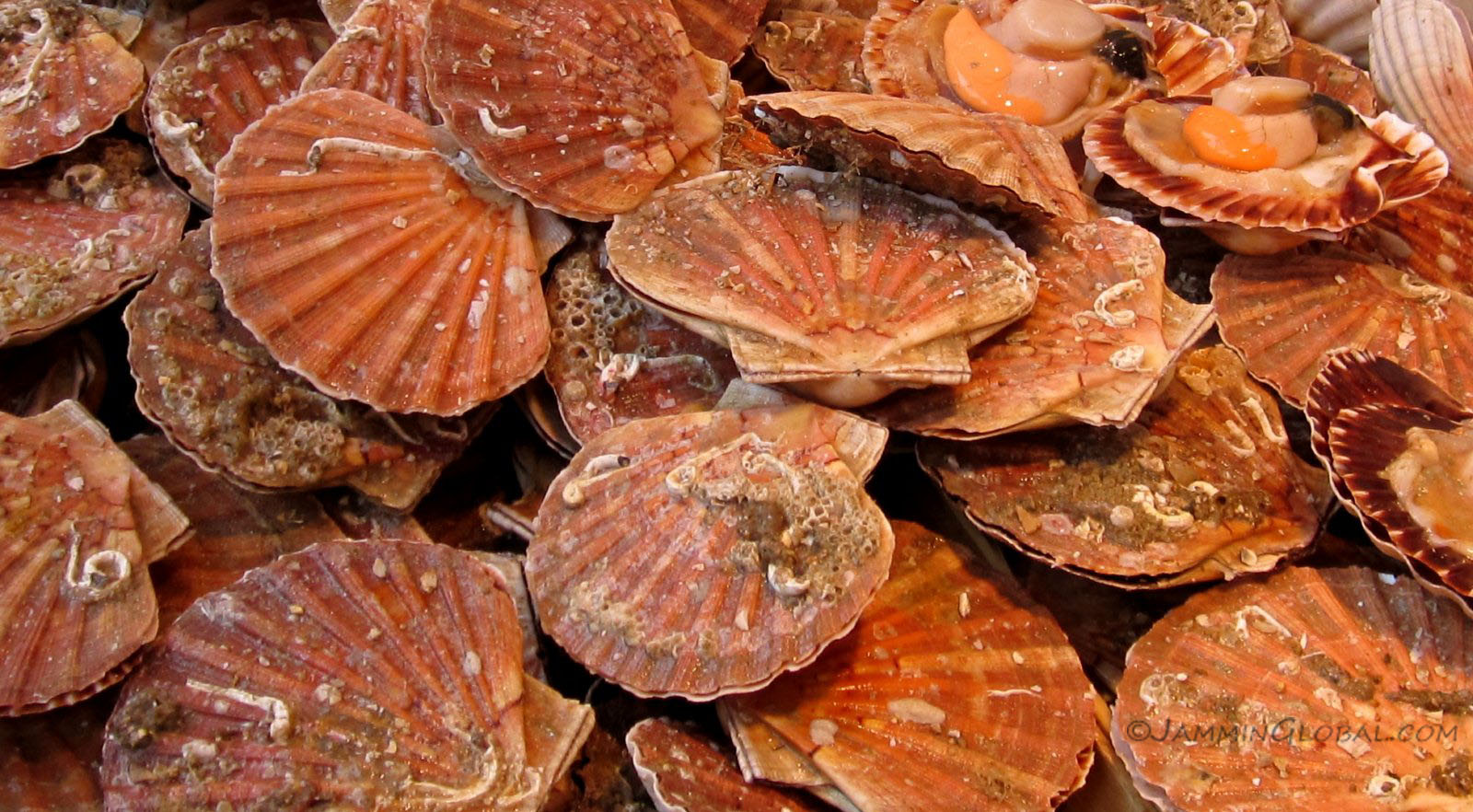
Scallops, referred to as Coquille Saint Jacques in France in reference to Saint James as the shell was his symbol and worn by pilgrims on their pilgrimage to his shrine at Santiago de Compostella in Spain.
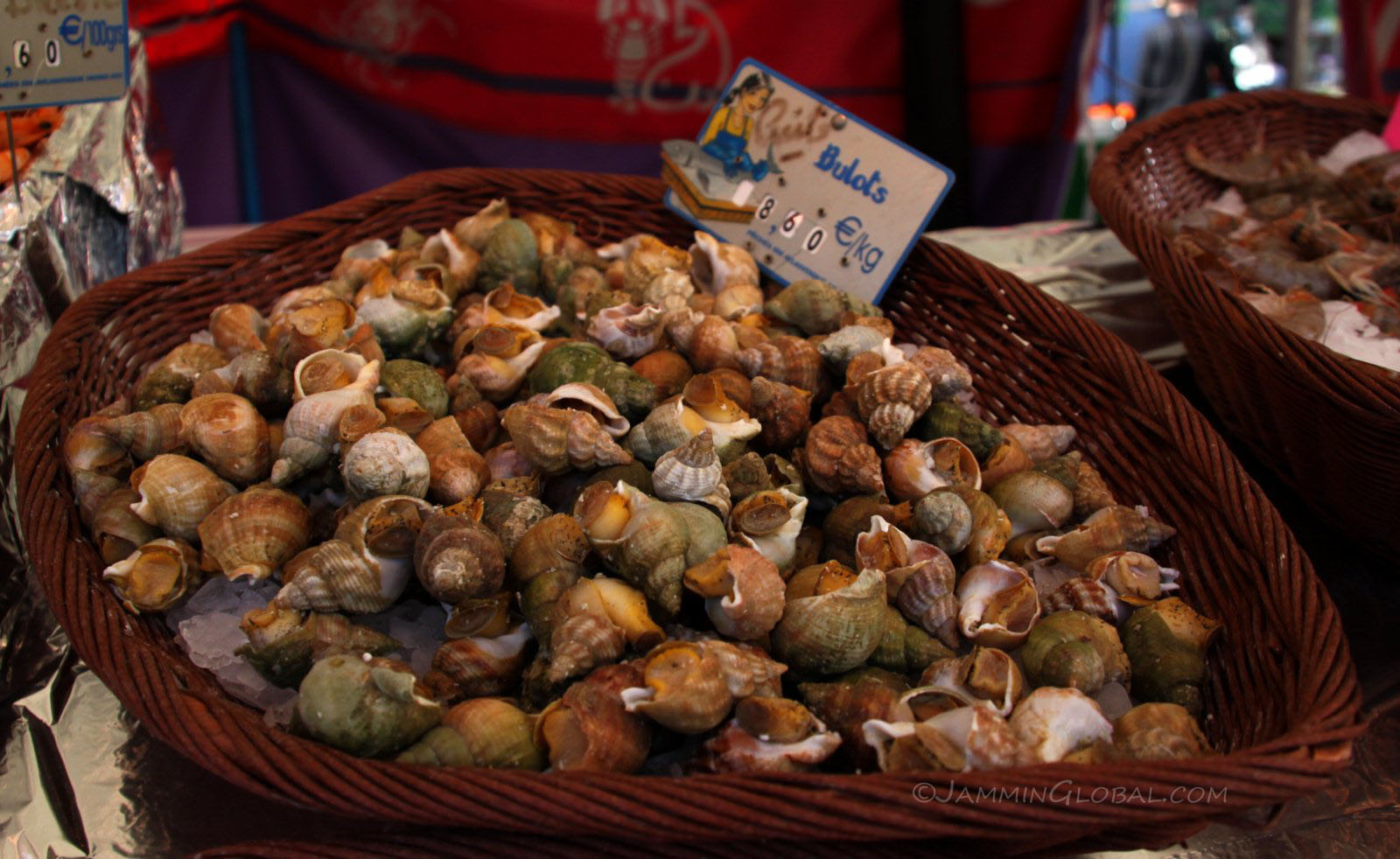
Escargot (snails), a French delicacy.
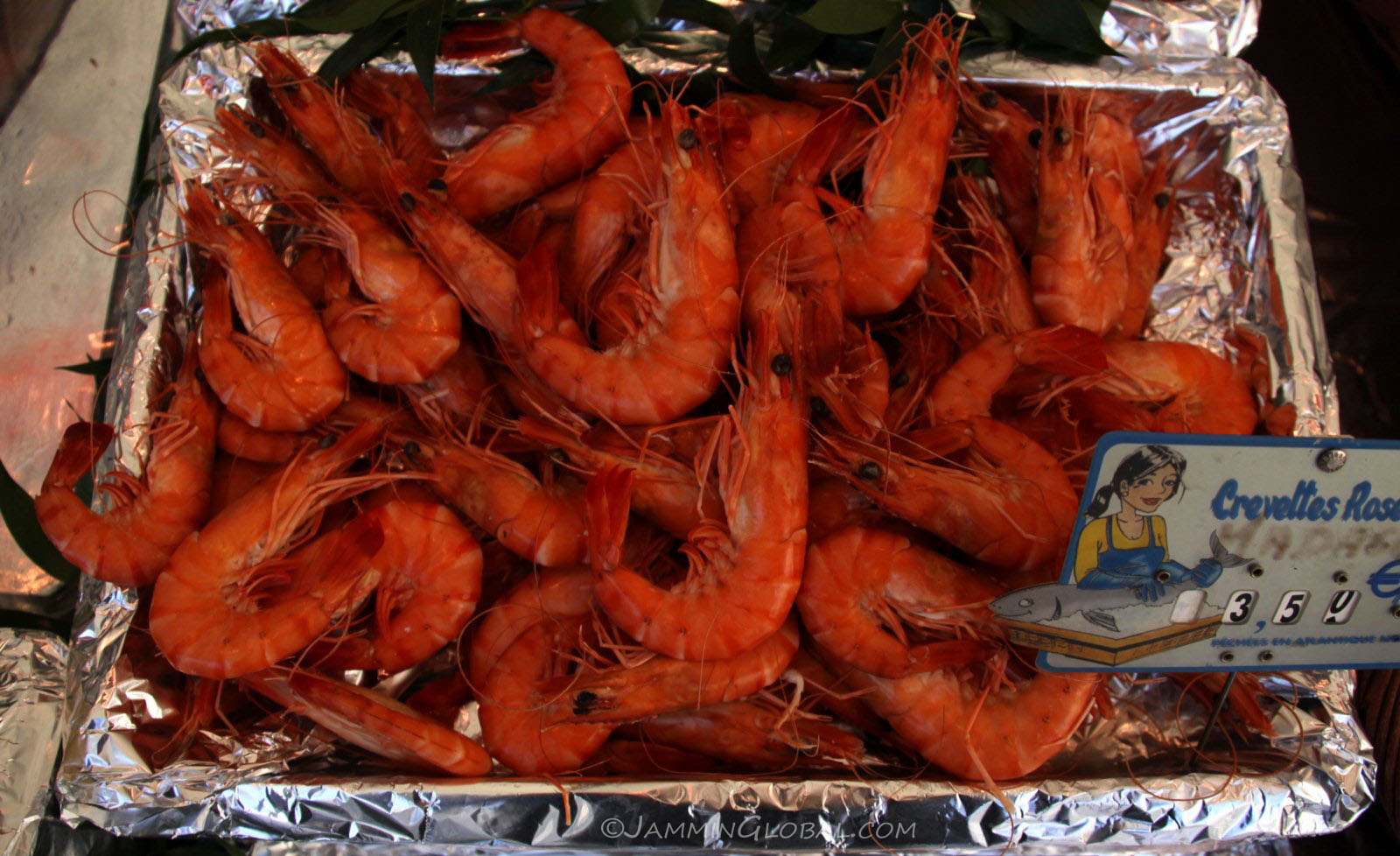
Jumbo shrimp.
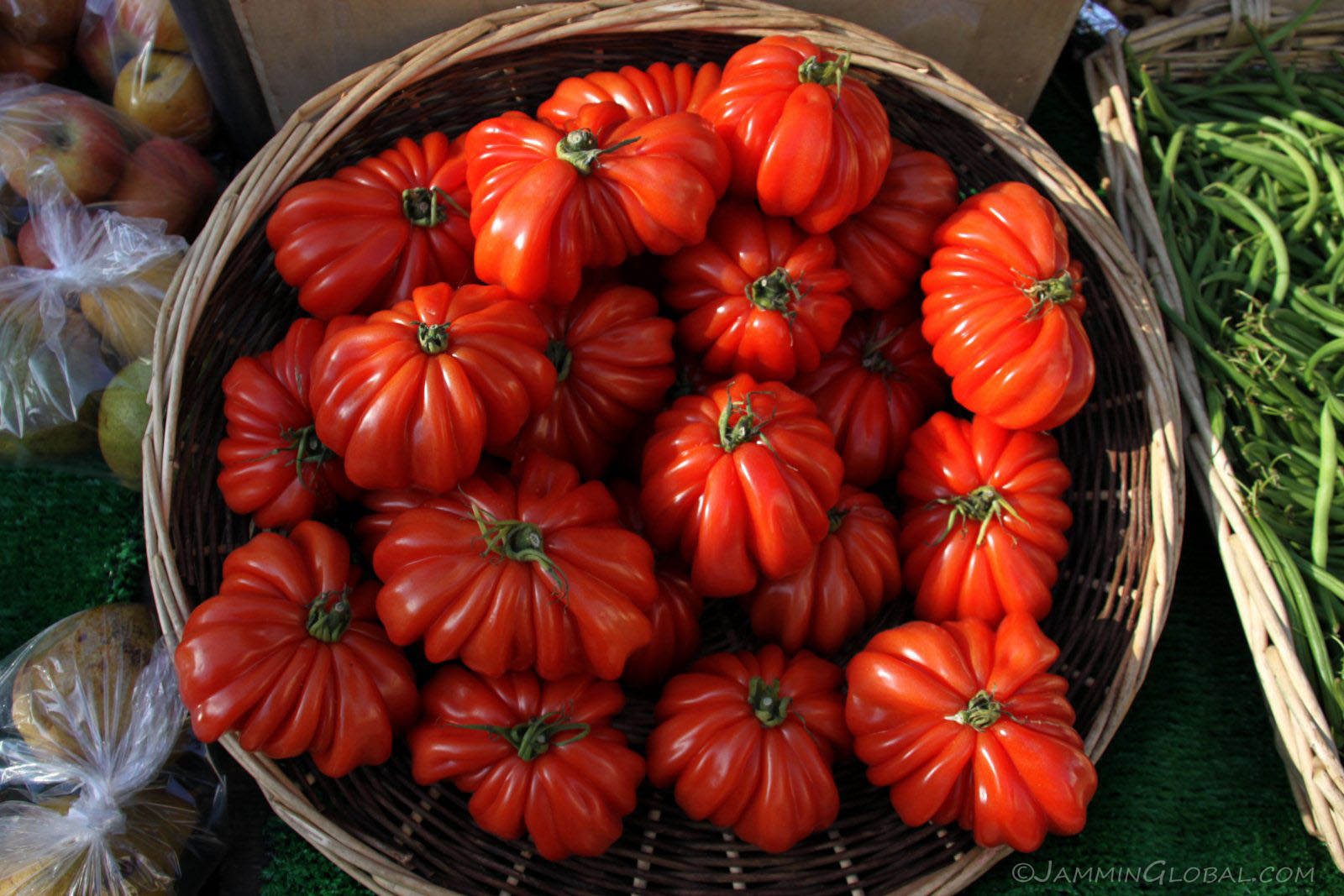
An old variety of tomatoes, marmande ancienne, with its unique ridges, coming from the south west of France.
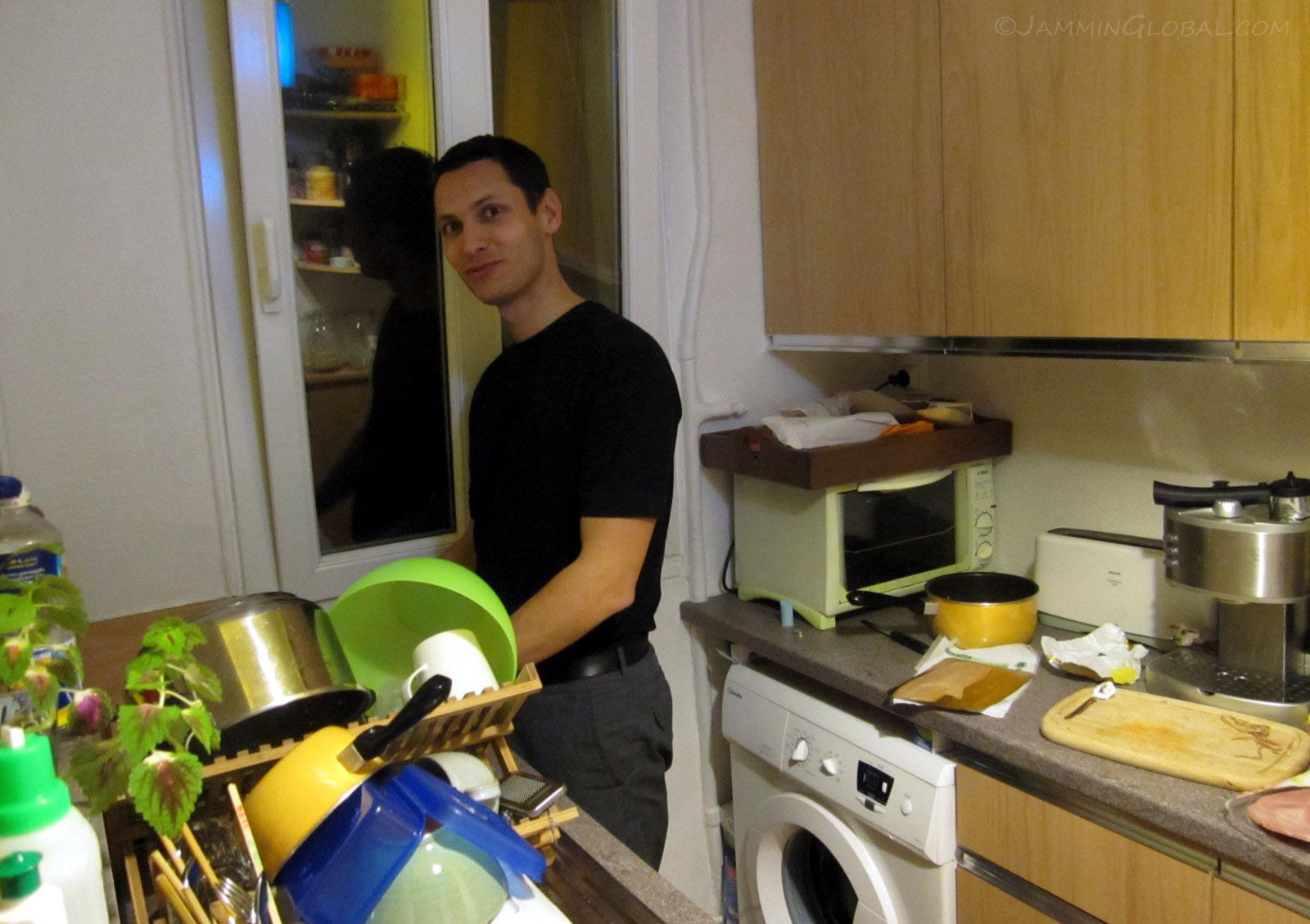
This is Uwe, who invited me to stay after we met at a CouchSurfing event. He had a beautiful apartment, but typical of this city, a tiny kitchen.
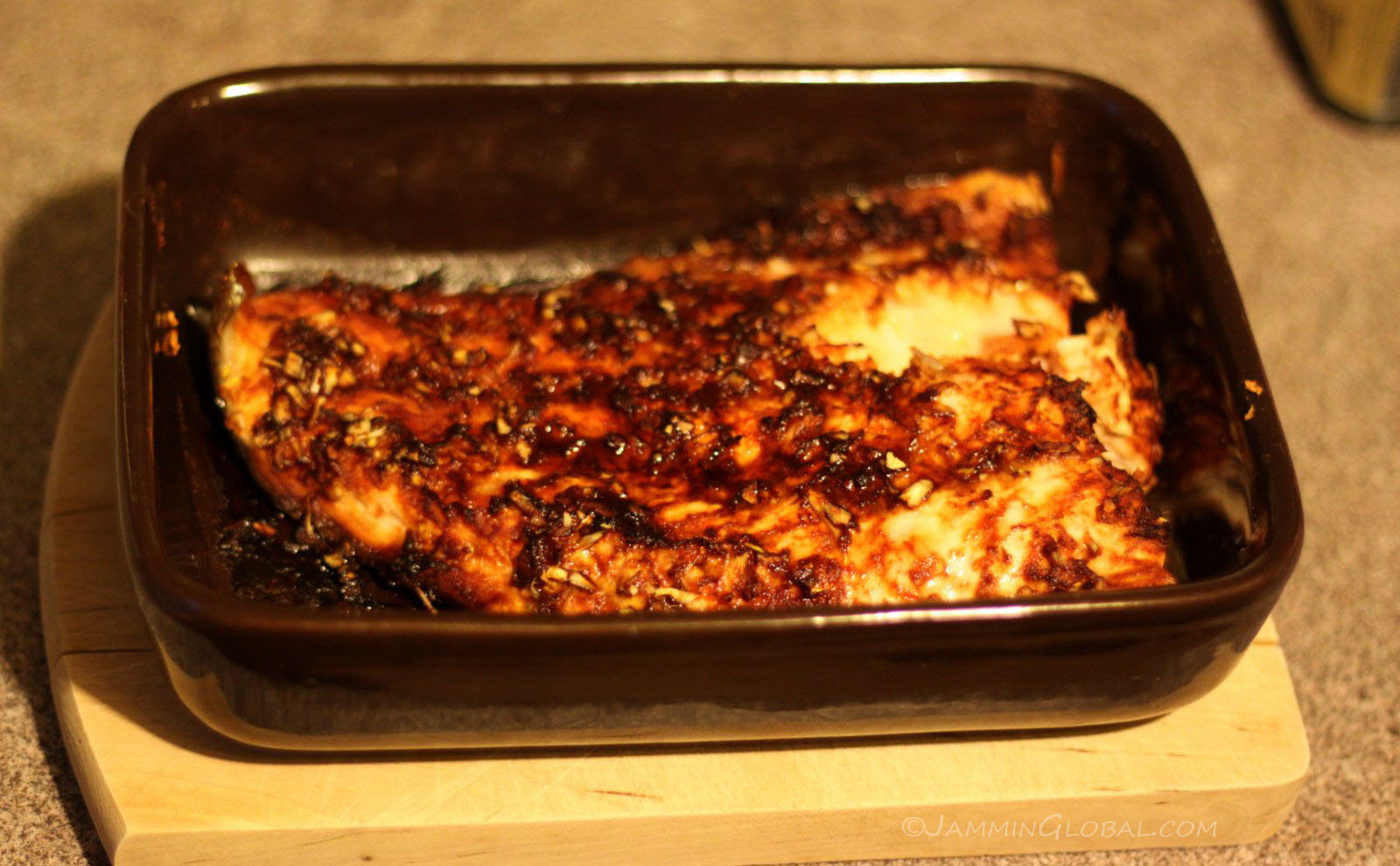
We had fun cooking together and I prepared this salmon dish with garlic, chilli powder and soy sauce, baked in a toaster oven.
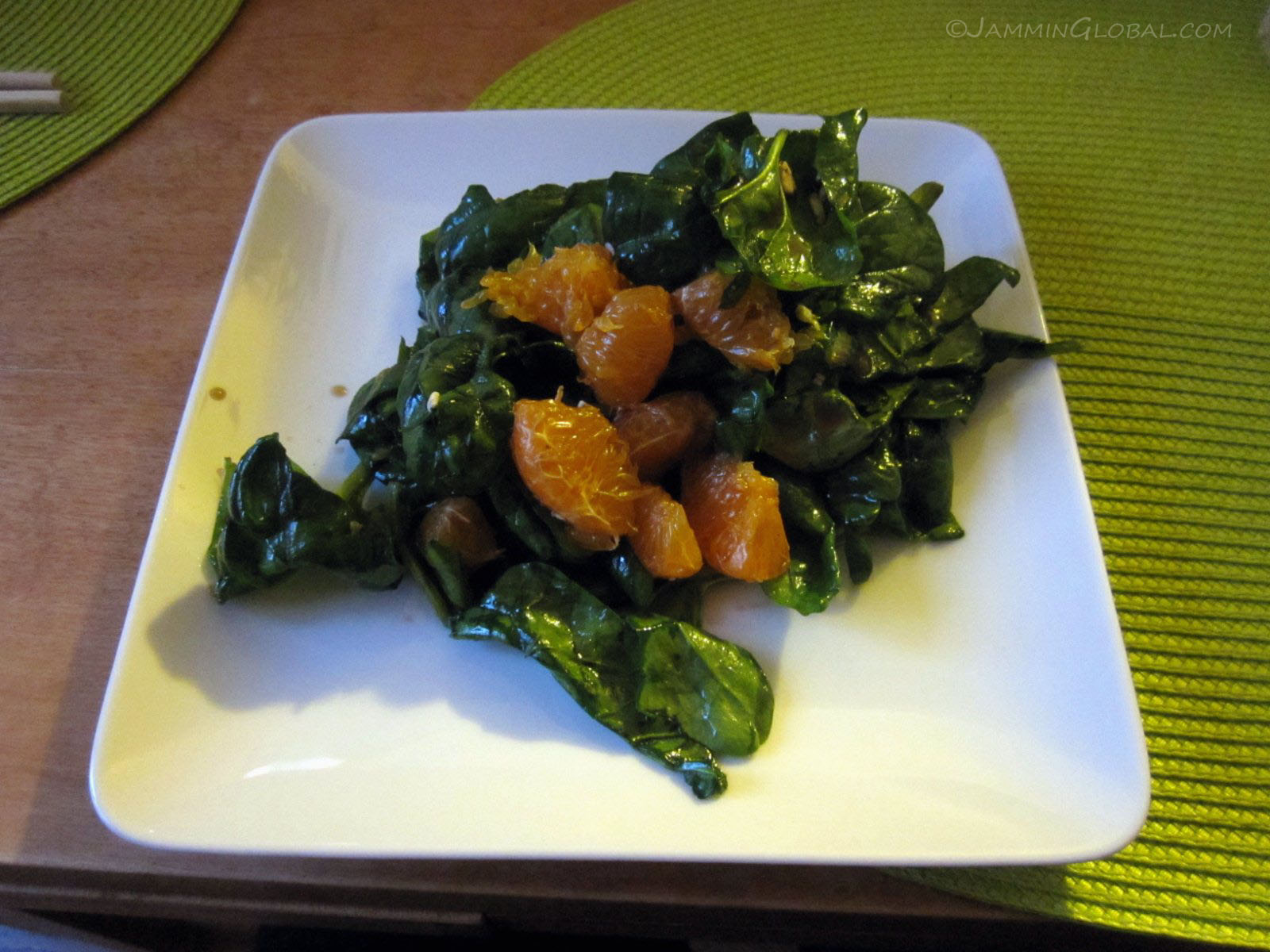
To go with a spinach and mandarin orange salad. To get the maximum benefit from the main ingredient in spinach, which is iron, the body needs vitamin C to help it absorb all those minerals.
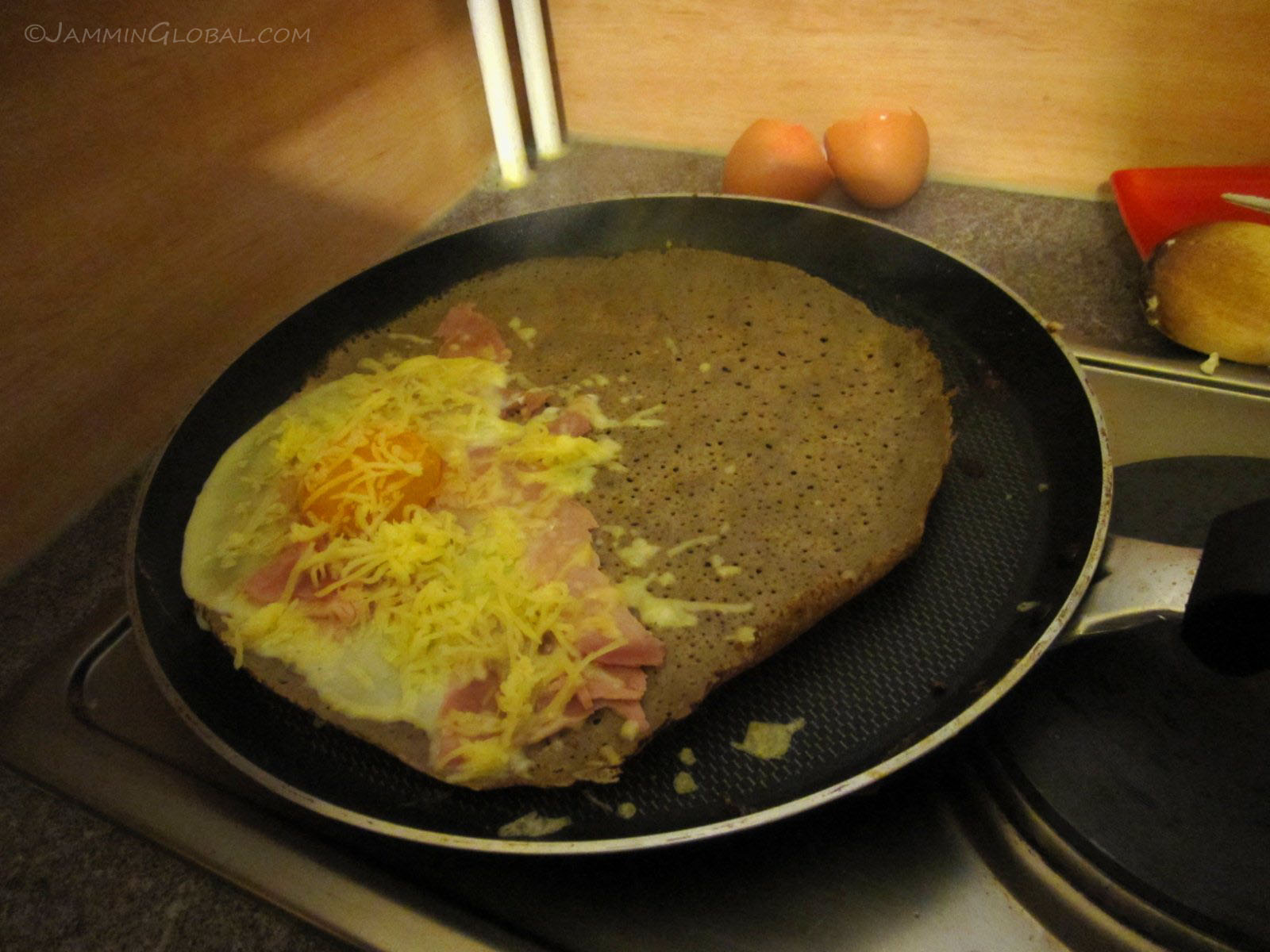
Another evening, Uwe made some crêpes, filled with ham, eggs and cheese.
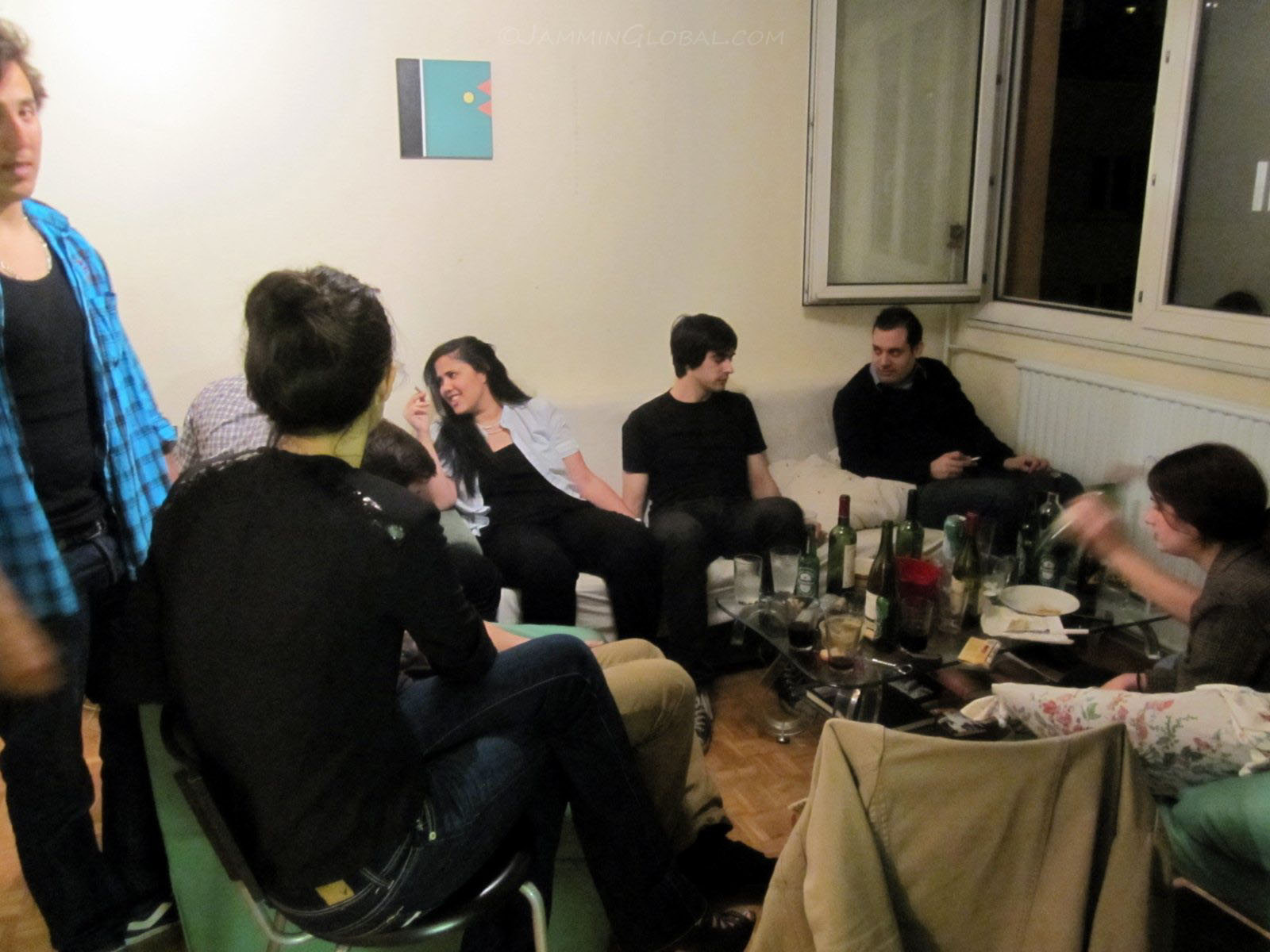
At a Venezuelan party in the 19th arrondisement. We met a few of them at another CS event and they invited us to this birthday celebration. I think there was one French person there.
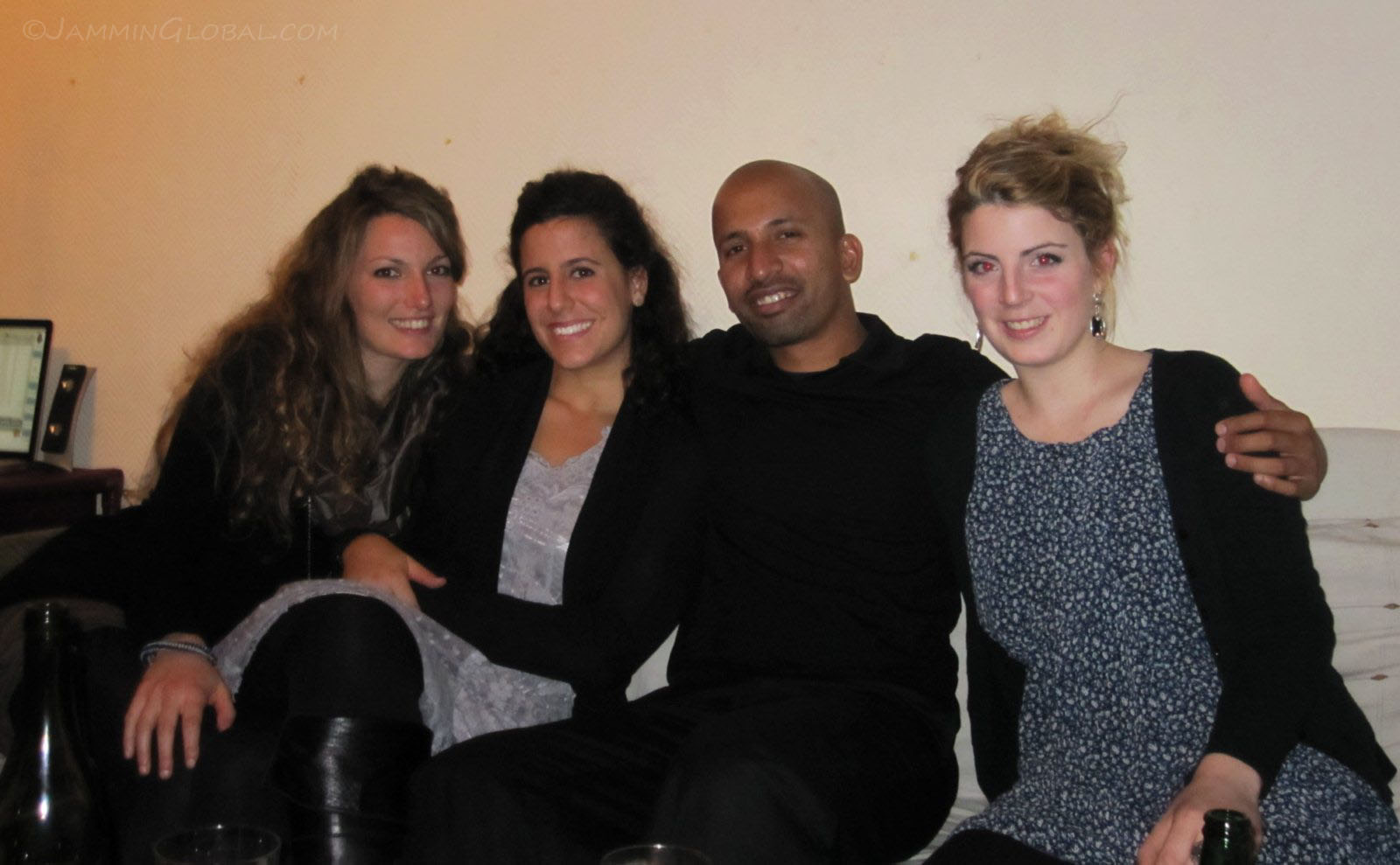
I chatted up these Italian beauties from Torino and Valentina (on my right) had just traveled through South America and we found out we were just a few days apart at the Salar de Uyuni in southwestern Bolivia.
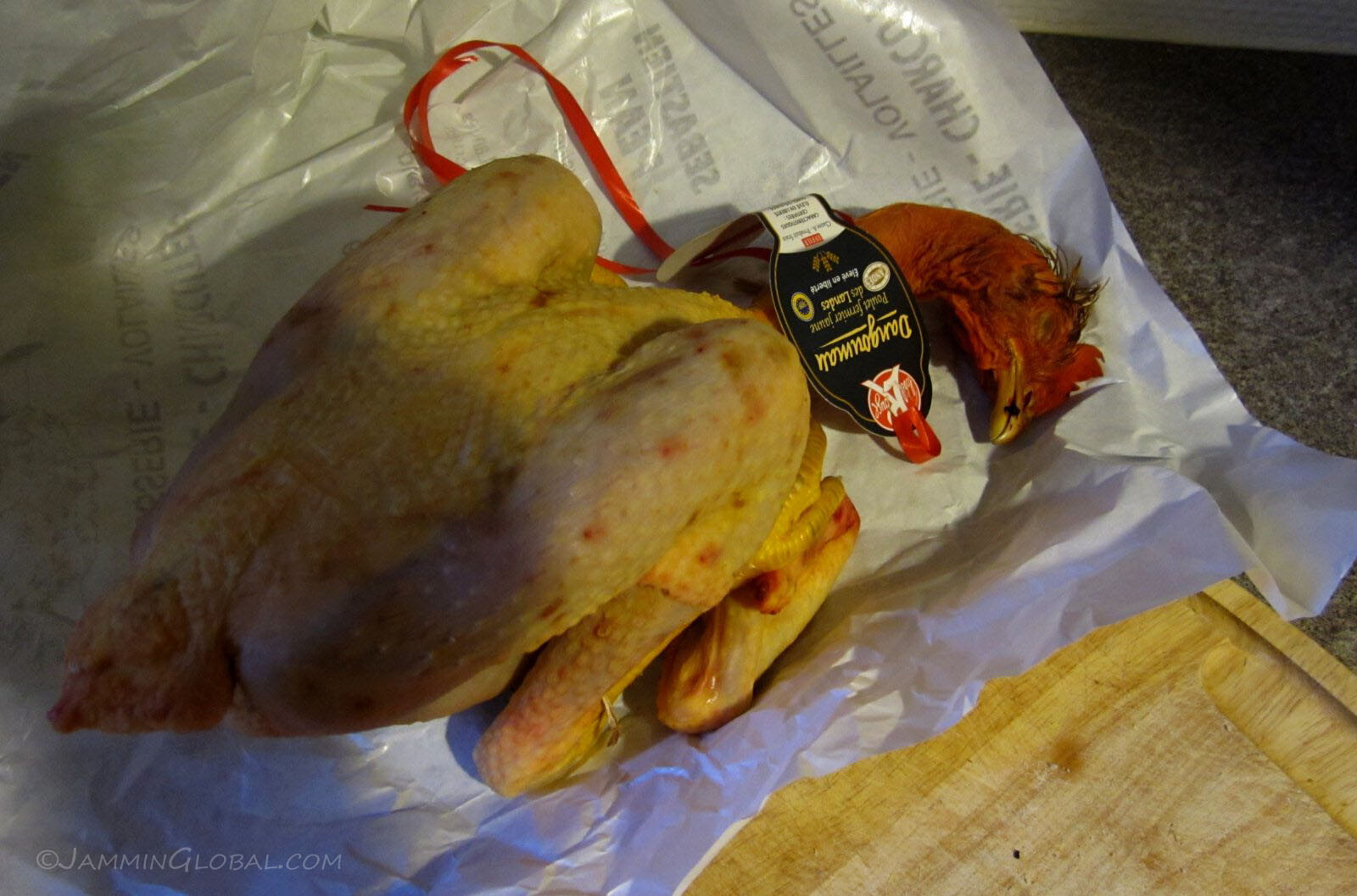
Time for a chicken curry in Paris. This organic, free range bird came with head and feet. It was the first time I had to chop the head off, but if you're going to eat meat, you can't get squeamish about how it got to your plate.
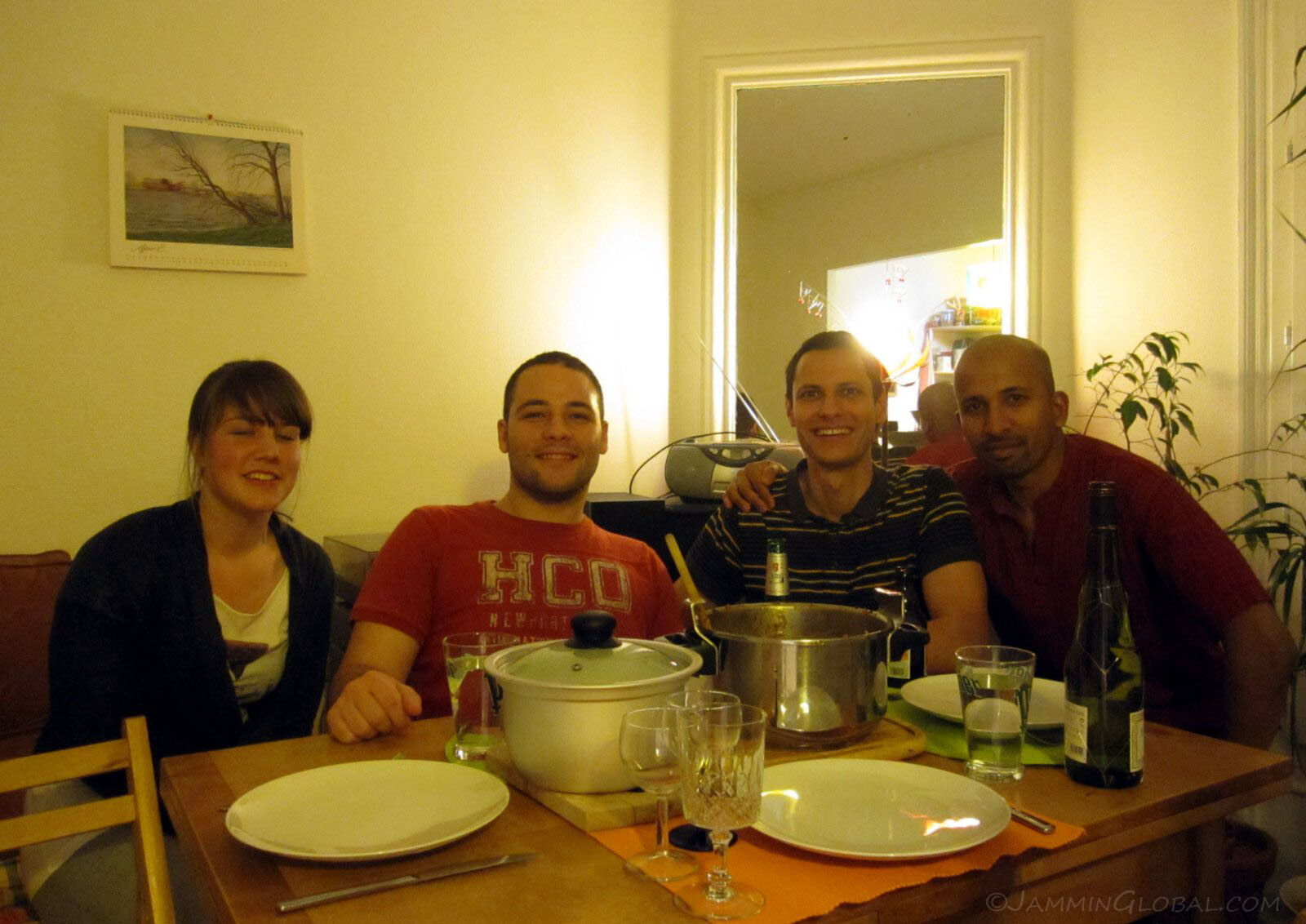
Sharing my curry with Uwe, Paolo (from Venezuela) and Marjanne (from Holland).
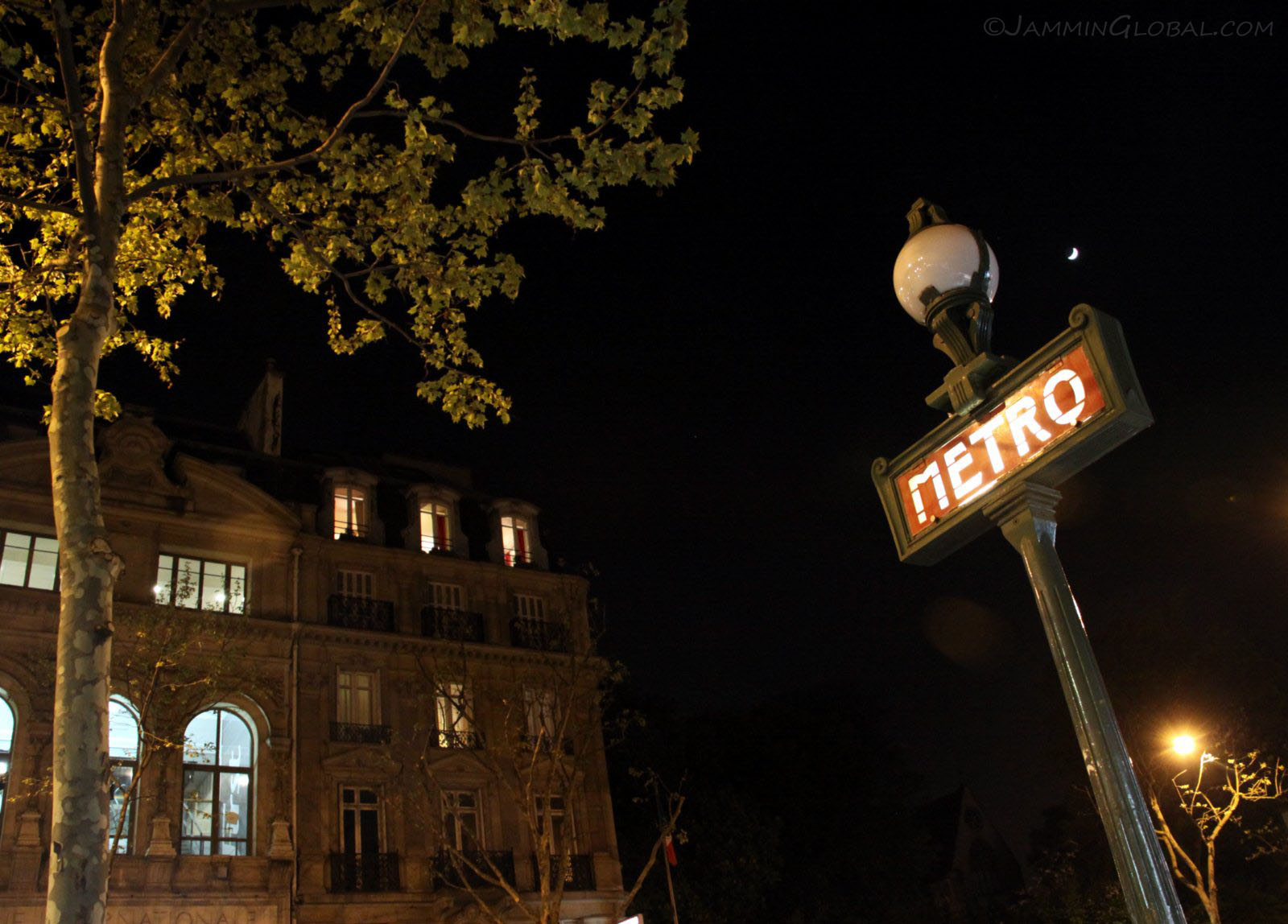
Staying in the city as long as I did, I became a frequent user of the Paris Métro, the underground rapid transit system, with one of the densest networks in the world offering a métro station about every two blocks. Besides its efficiency, the Métro is known for its beautiful art nouveau entrances designed by Hector Guimard.
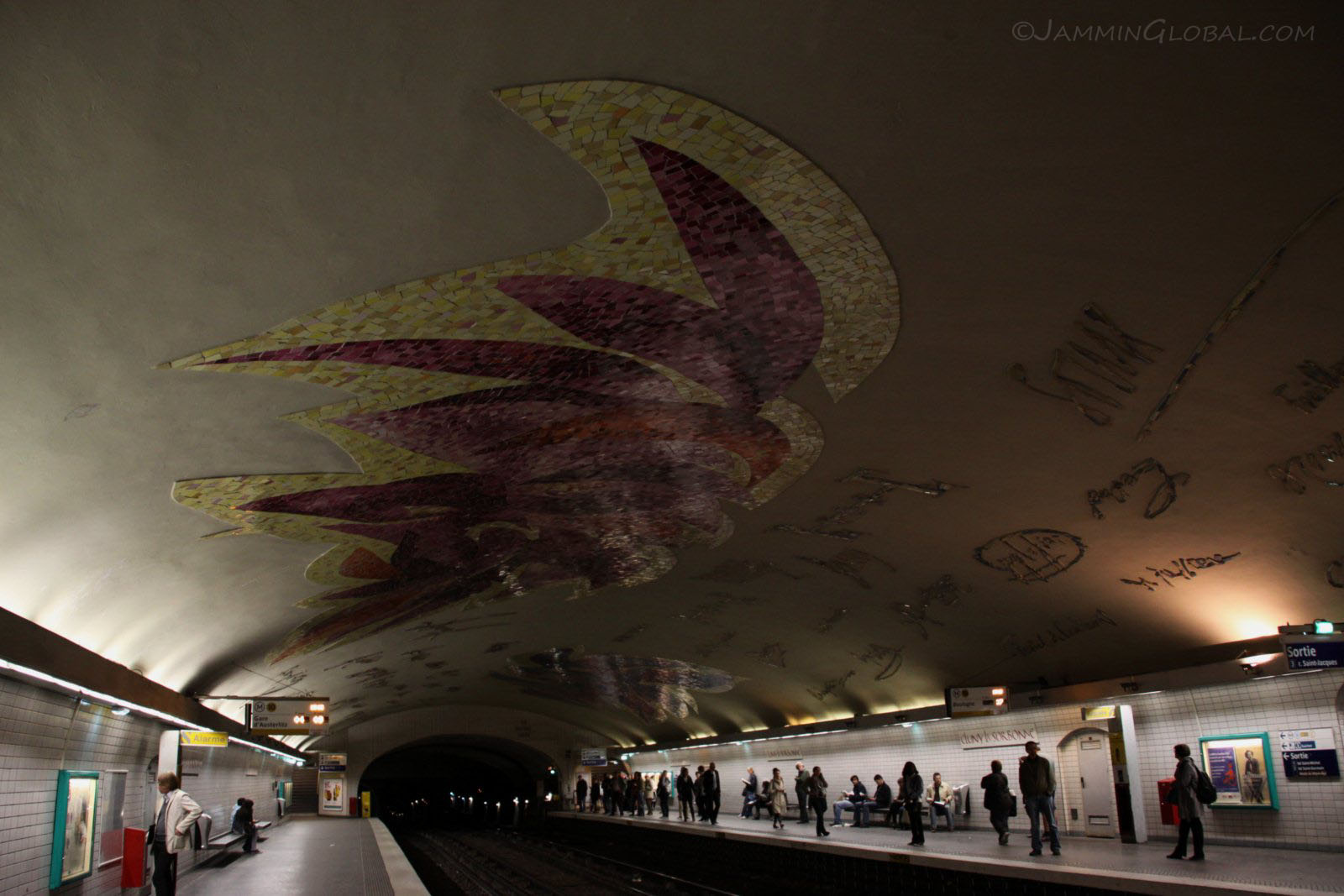
Along with artsy exteriors, the interiors of many métro stations are worth a visit by themselves. The vaulted design of the stations, instead of the usual support pillars, lends the space to creativity. This is Cluny - La Sorbonne on Line 10, under the famed University of Paris that was referred to as La Sorbonne and was founded in 1150 and got broken apart in 1970 into 13 different universities.
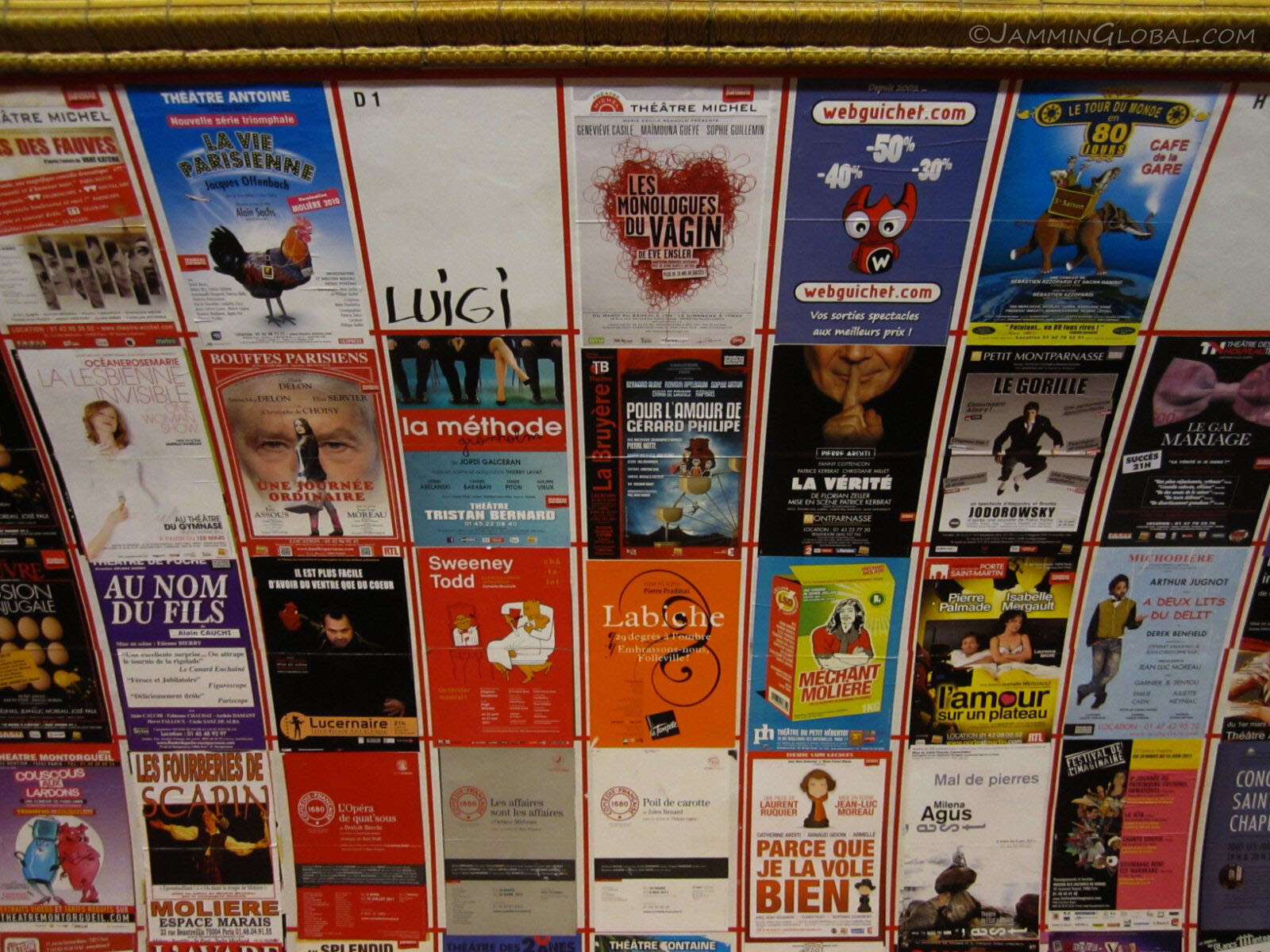
The Métro was inaugurated in 1900 and since the early days, advertisements have been plastered on the walls, but in a decadent manner, being framed by a gold border.
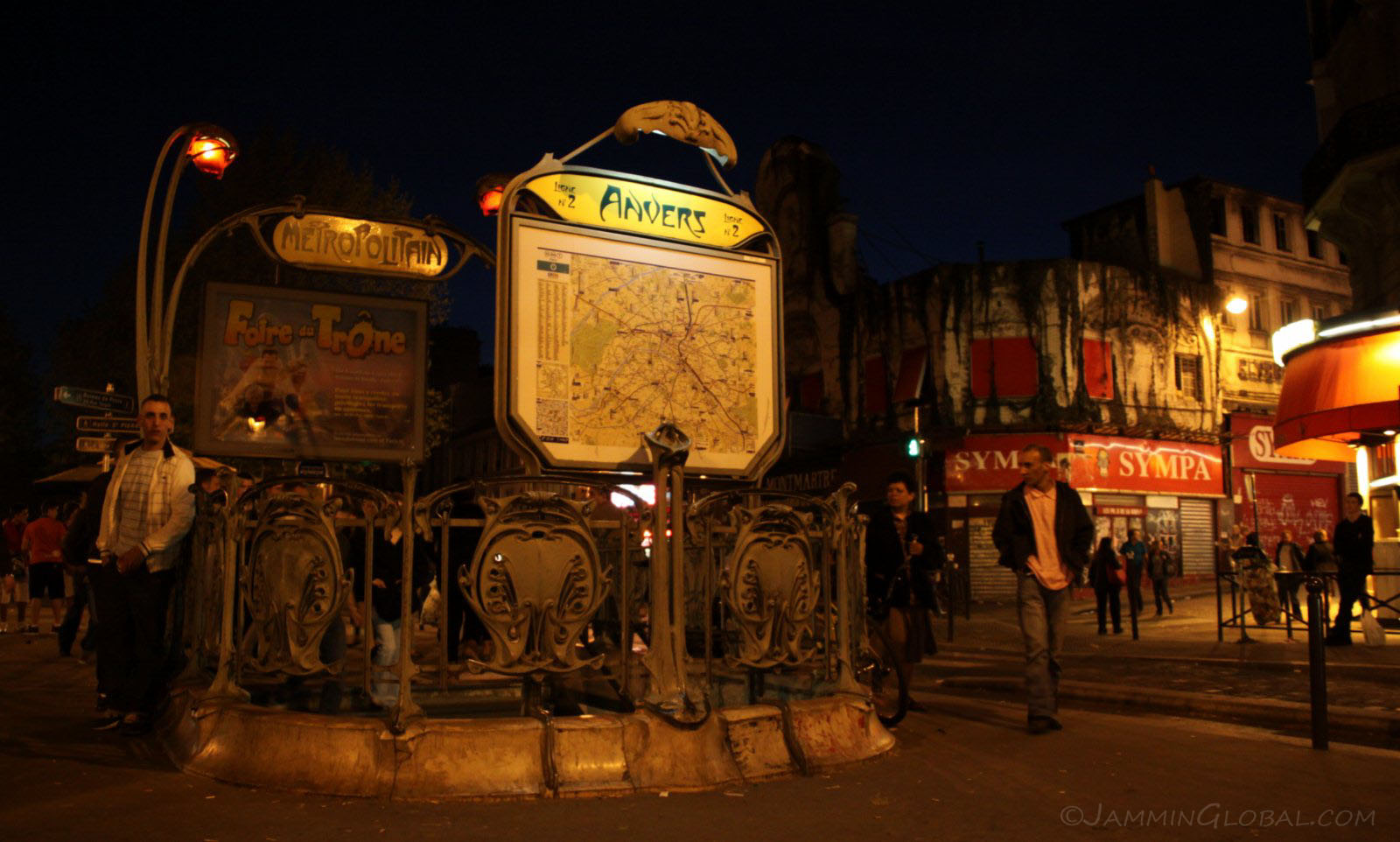
The cast-iron balustrade in a plant-like motif of the entrance to the Anvers station.
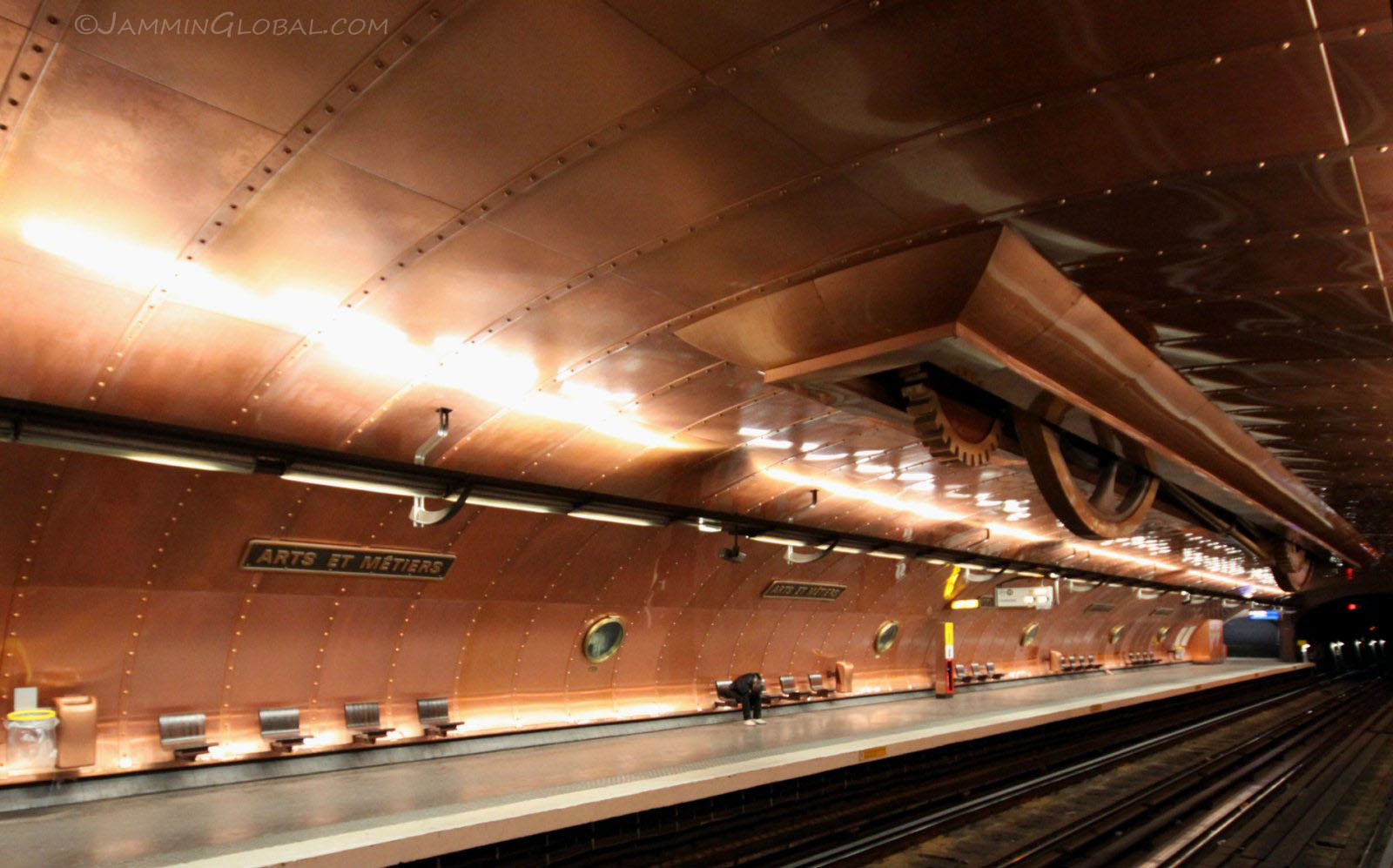
Besides art nouveau, there a few stations with a completely unique look, like this one of the Arts et Metiers Station on Line 11 right under the Museum of Arts and Crafts, which also houses items of historical scientific significance. It was designed in 1994 by François Schuiten in a 'steam punk' style to capture the essence of Jules Verne's science fiction works. Besides the huge gears, the station resembles a submarine, complete with portholes.
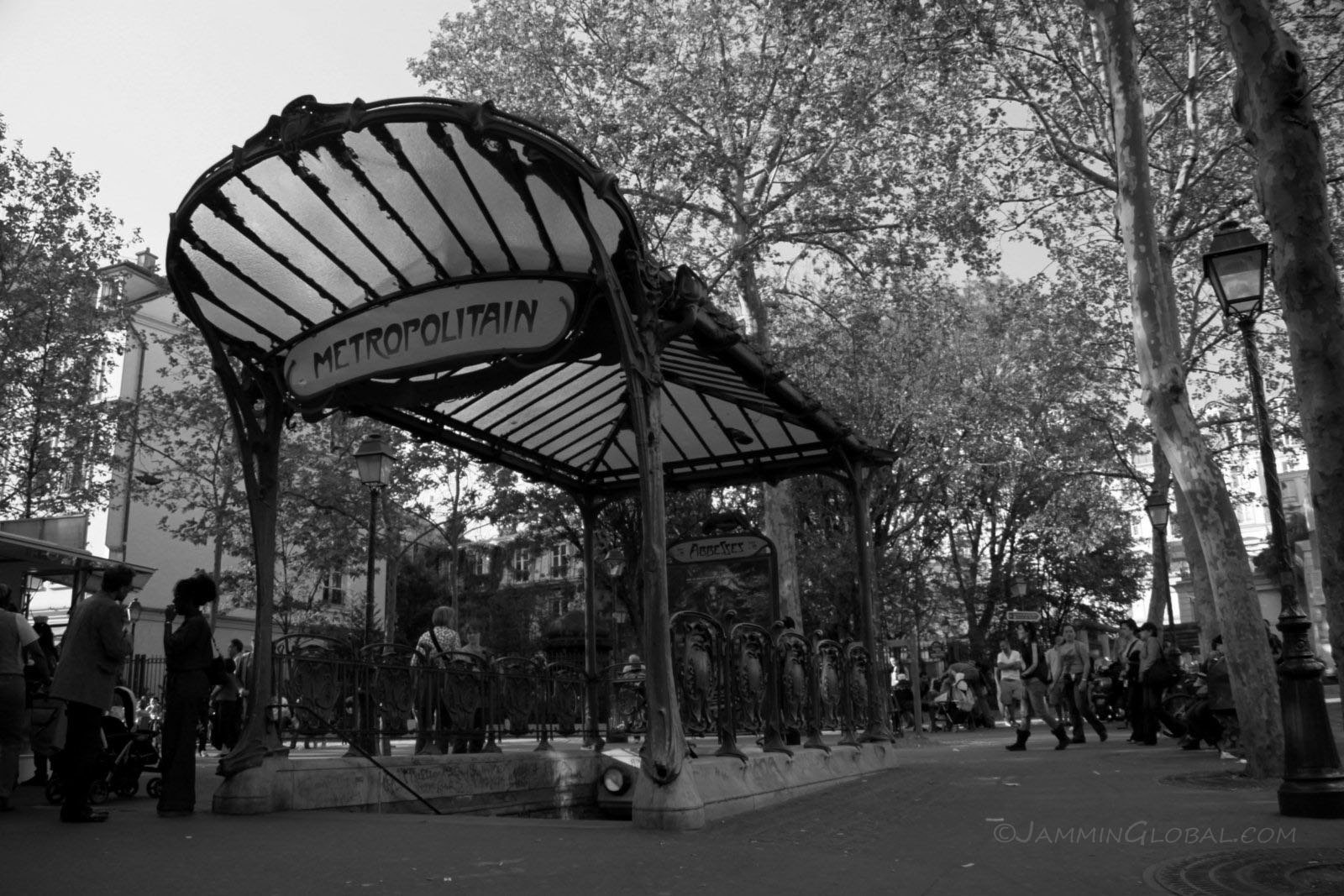
The entrance to the Abbesses station on Line 12 is one of only three original glass canopy entrances from Hector Guimard that are still standing. The original company that operated the system was La Compagnie du chemin de fer métropolitain de Paris, which was shortened to Le Métropolitain and further shortened to Métro. It's from the Paris Métro, that the word 'métro' has been genericized from to refer to underground urban rail networks. In the US, the word 'subway' came from the New York system but elsewhere in the world, the word 'métro' has taken precedence.
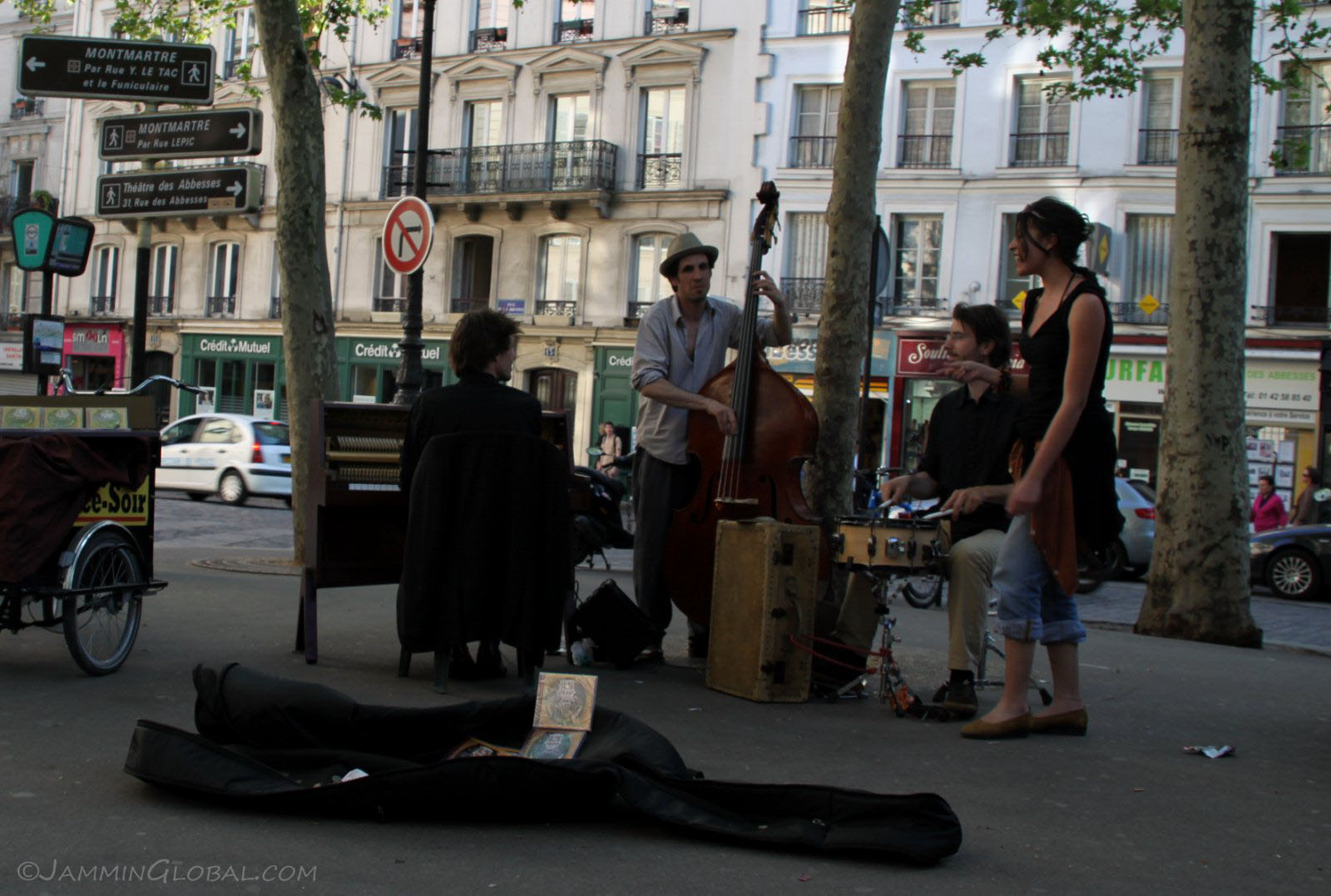
The Abbesses entrance brings you up to Montmarte, a traditionally artsy neighborhood of the city, where this quartet was strumming out some good tunes.
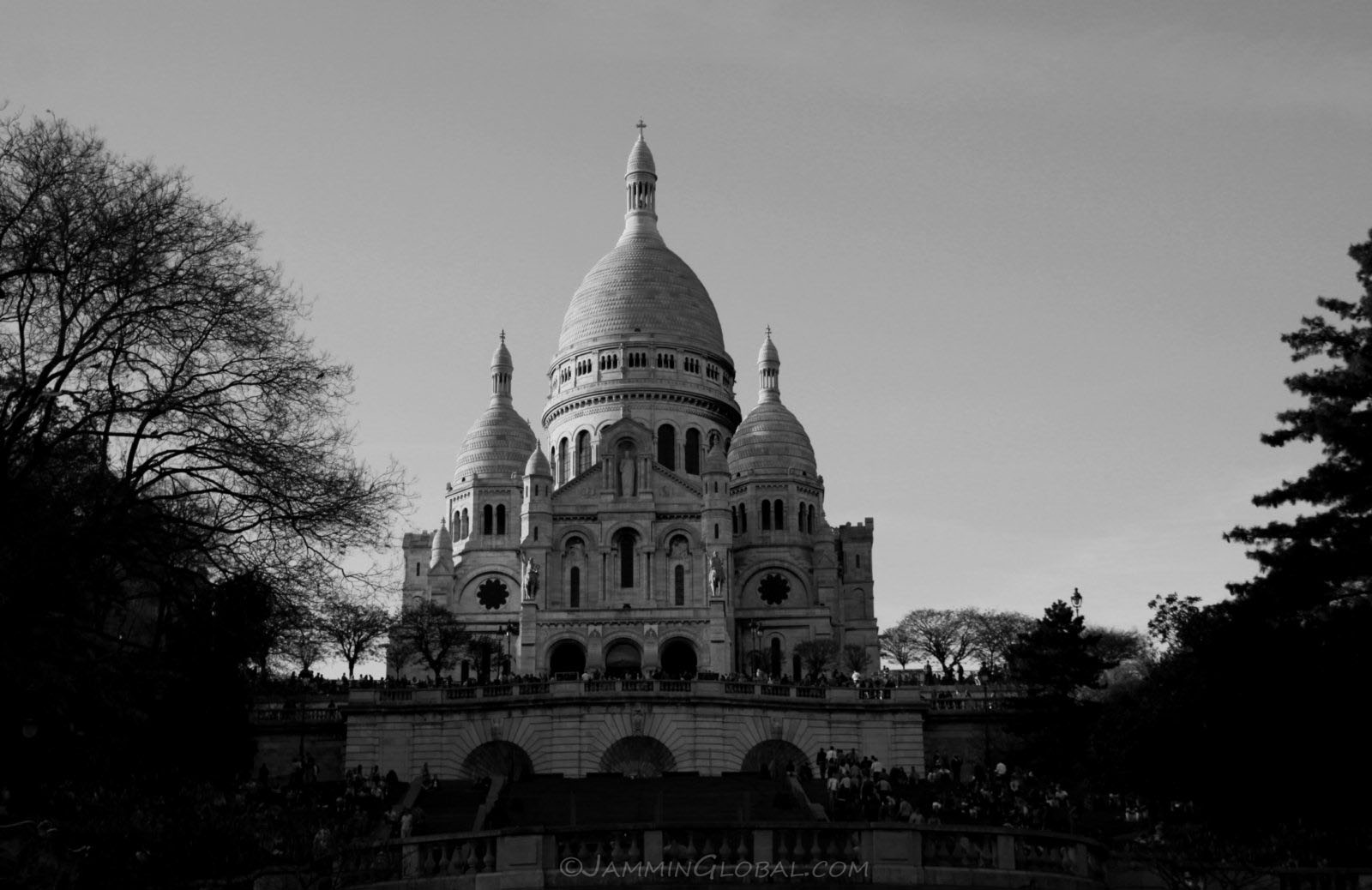
Montmarte refers to this hill, which is the second highest point in Paris, and this surrounding neighborhood. The biggest attraction is the Basilique du Sacré-Cœur, built on top of the 130 m (427 ft) hill.
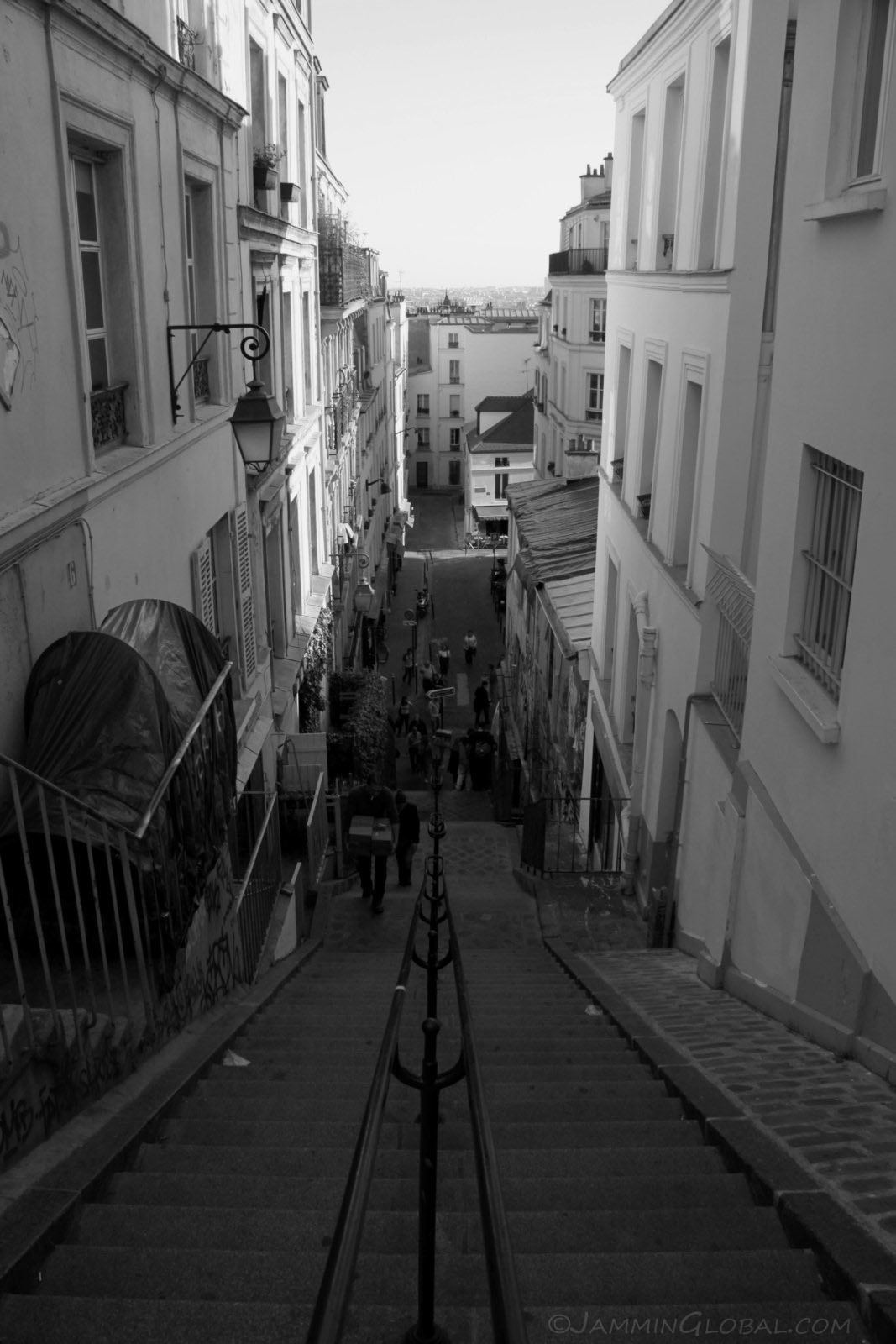
A characteristic of the neighborhood are its many long escaliers (stairs) leading to the top.
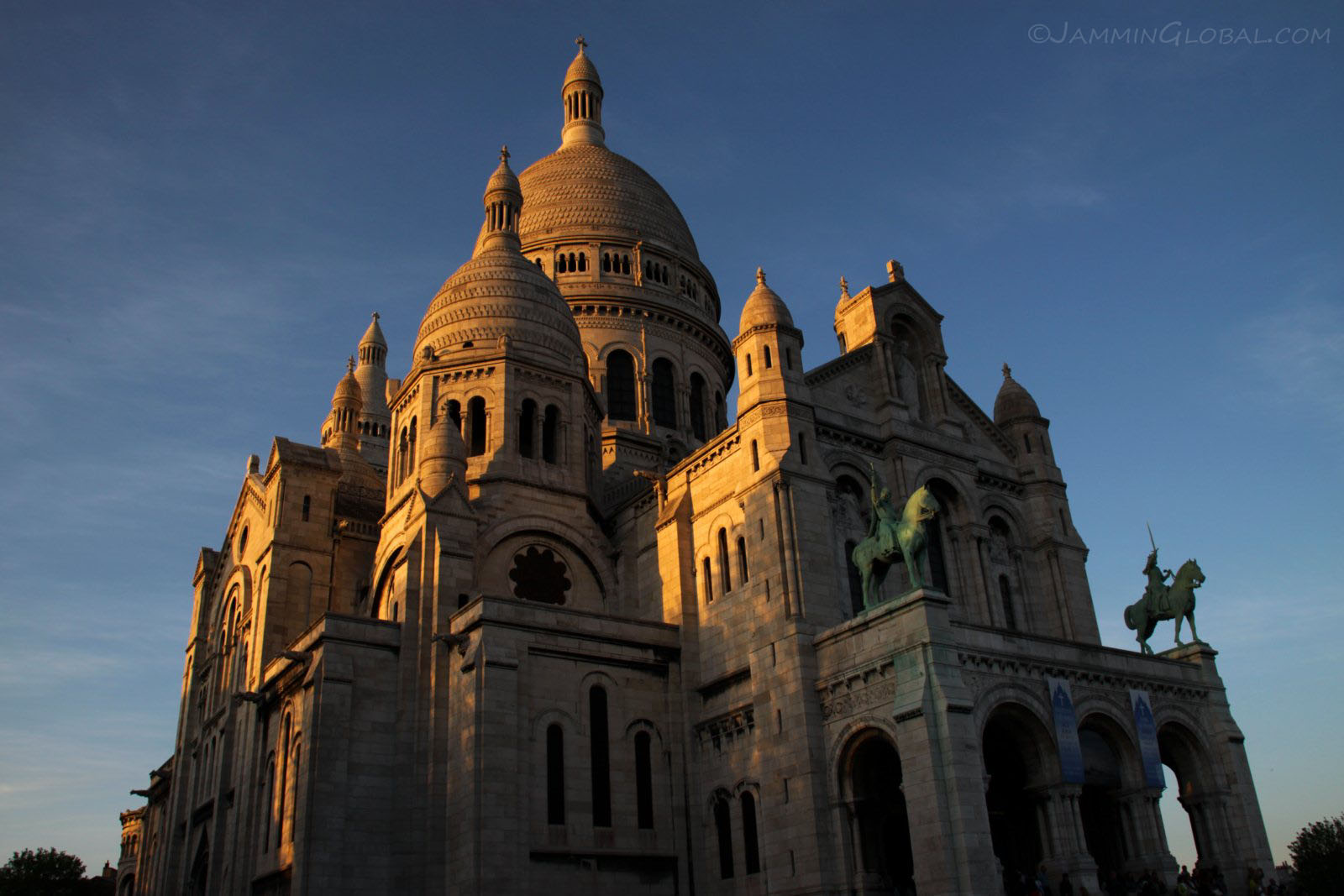
A grand view of Sacré-Cœur at sunset. It was built for a variety of reasons, such as to honor the dead in the Franco-Prussian War and the uprising of the Paris Commune in 1870, along with being a national penance for the excesses of the Second Empire of Napoleon III. The winning design was from Paul Abadie who went with a Romano-Byzantine style and incorporated many national symbols, such as the two equestrian statues of Joan of Arc and King Saint Louis IX at the entrance.
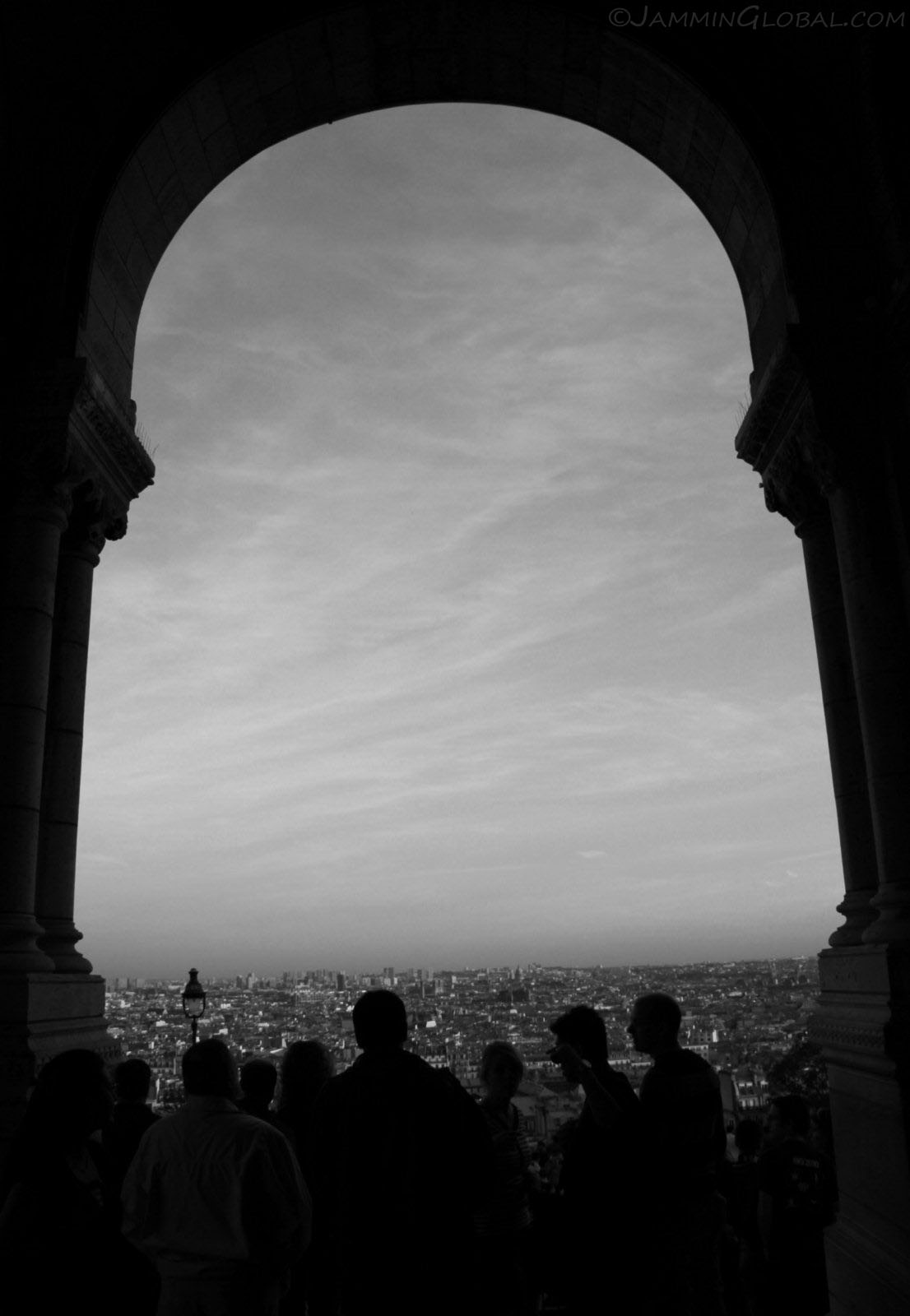
A view of Paris through one of the arches at Sacré-Cœur.

Being the highest place in the area, it offers a panoramic view of the city. The Haussmann influence of setting the height of the buildings showing through with the flat skyline.

Besides the basilica, walking around Montmarte is a pleasant experience (if you ignore the throngs of tourists).
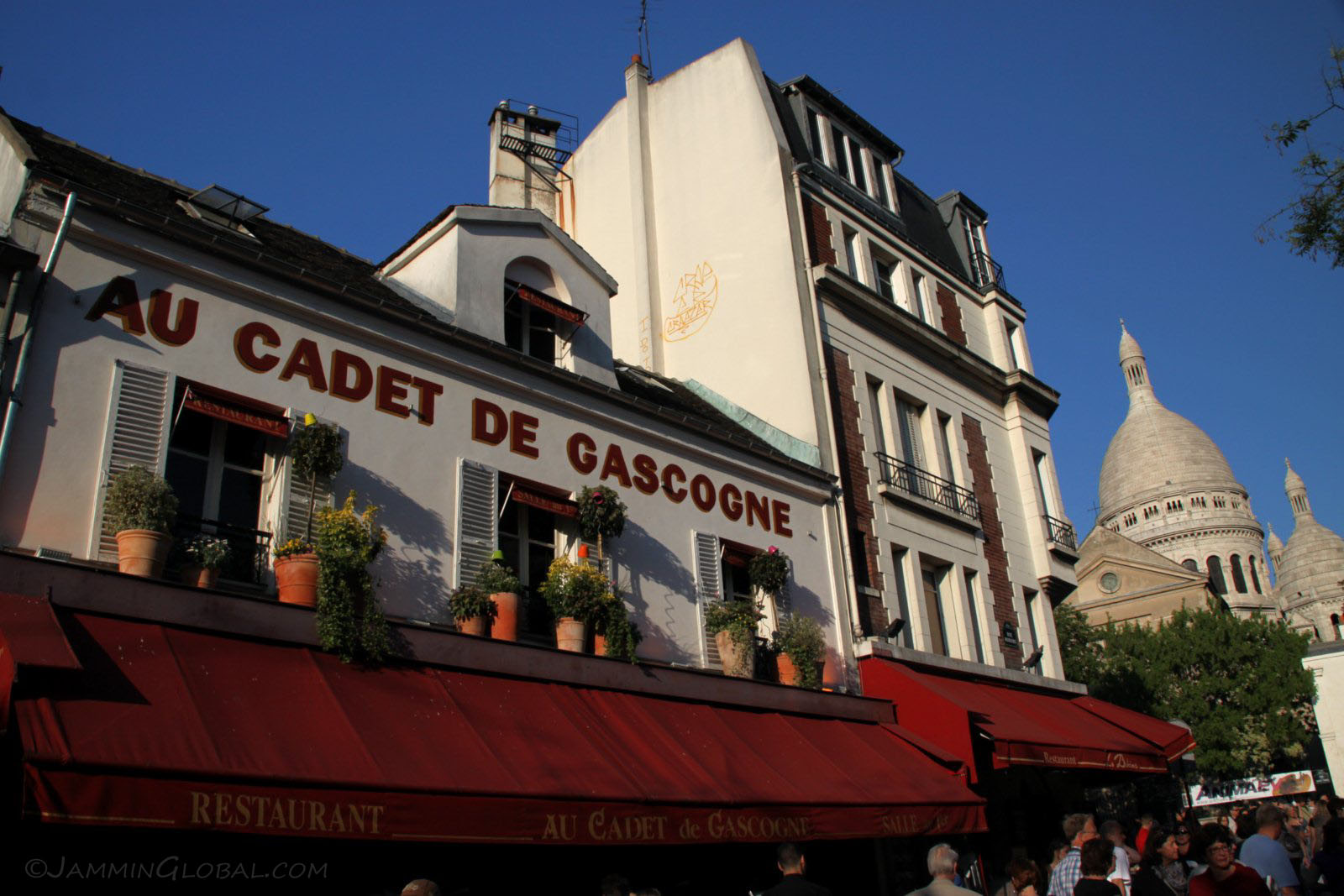
A few streets from the basilica is Place du Tetre, known in English as...
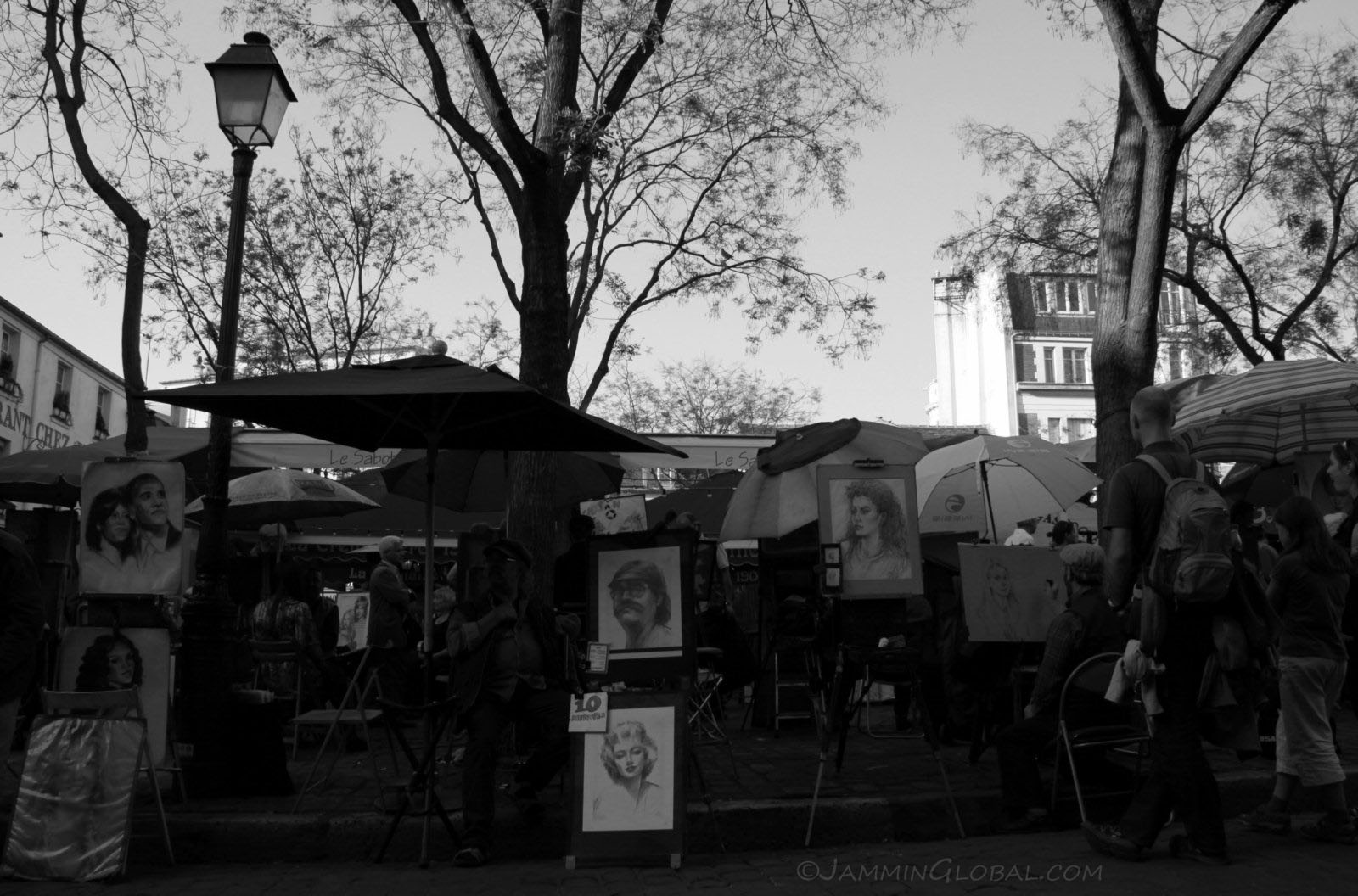
...the Artist's Square, as it used to be the home of Paris' modern art movement, with Picasso, Salvador Dali and other great painters taking up residence here at one point in their careers. Nowadays, local artists sell their works along with doing the typically tourist thing of portrait drawings and caricatures.
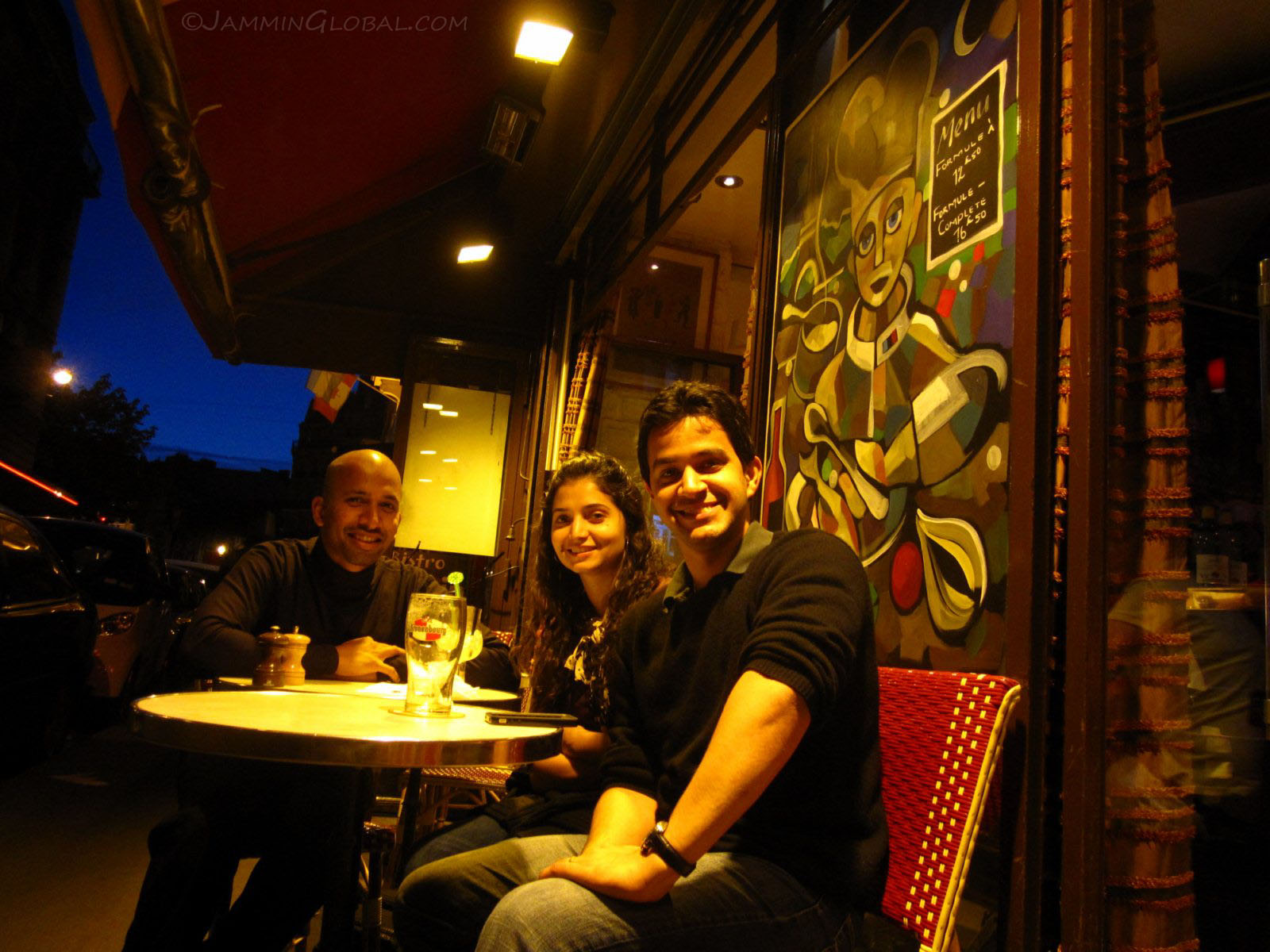
Meeting up with Shanaya, a classmate and old friend from Kodai School days in India and her recently married husband, Anurabh. She's running a successful food products company in Ahmedabad and flies regularly to London, where Anurabh is finishing up at the London School of Economics. They just happened to be coming to Paris for a weekend getaway while I was there. Shanaya's been following my trip on facebook and asked, "what happened to you? You were such a good boy. Where did this crazy motorcycle trip come from?" A good connection was made with Anurabh since his father is an Indian ambassador and is currently in charge of the passport division back in India. If only I had met him a few days before he could've got me a full 10 year passport, instead of the 2 year passport that the Indian embassy in Paris gave me, citing that I wasn't a resident of Paris.
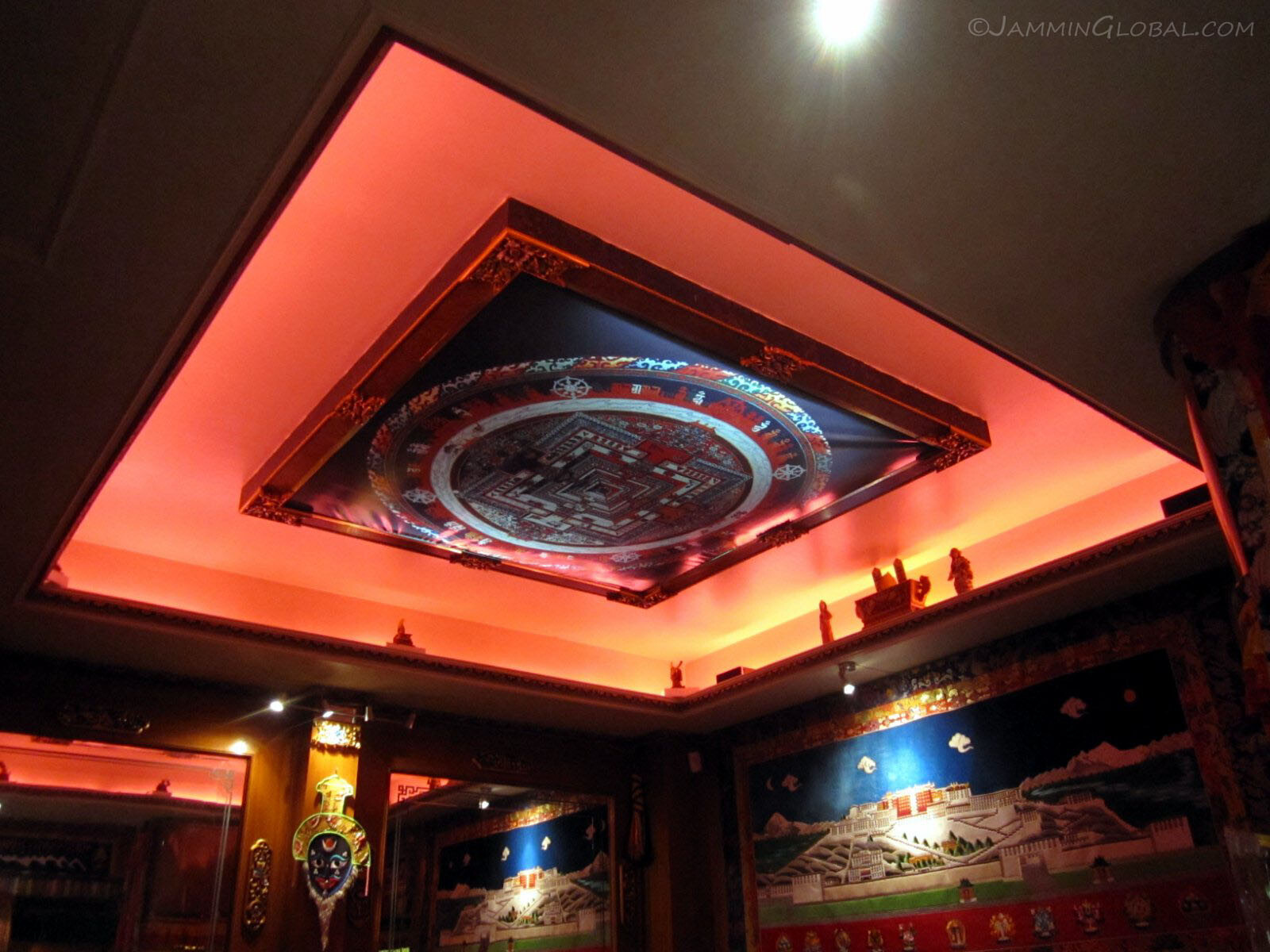
We found a Tibetan restaurant for dinner to relive the cuisine we had up on the hill of Kodaikanal in southern India. When the Chinese took over Tibet in 1959, India offered asylum to the Tibetans and they've setup communities in various places around the country. Dharamsala, in northern India, is the home of the Dalai Lama and the exiled Tibetan government. This issue is a thorn in the growing good relations between India and China.
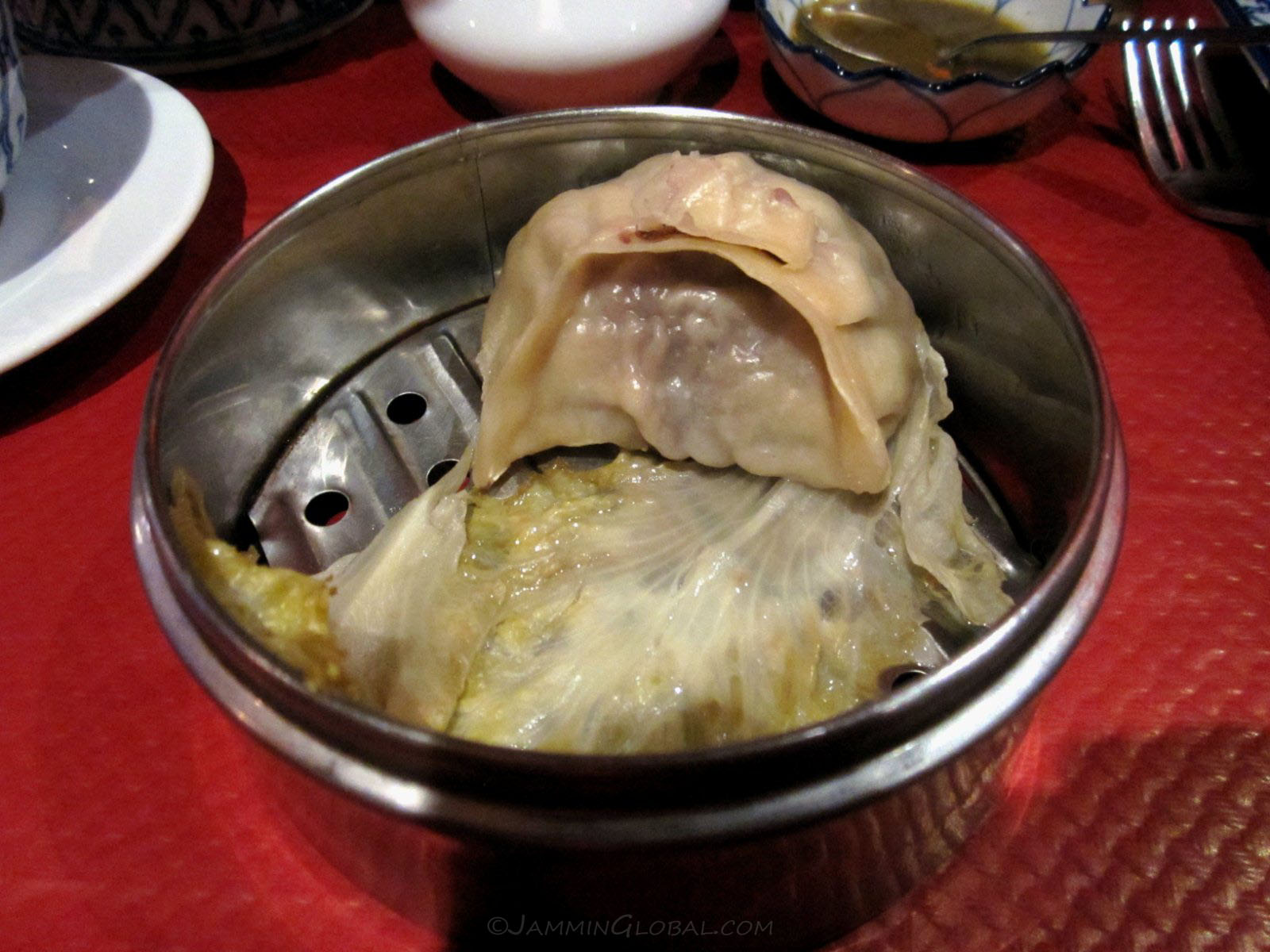
The small town where our school was located had a sizable Tibetan population and along with that came some great food. Having some steamed momos, which are a rice dumpling stuffed with beef and vegetables. We hadn't eaten momos in about 12 years.
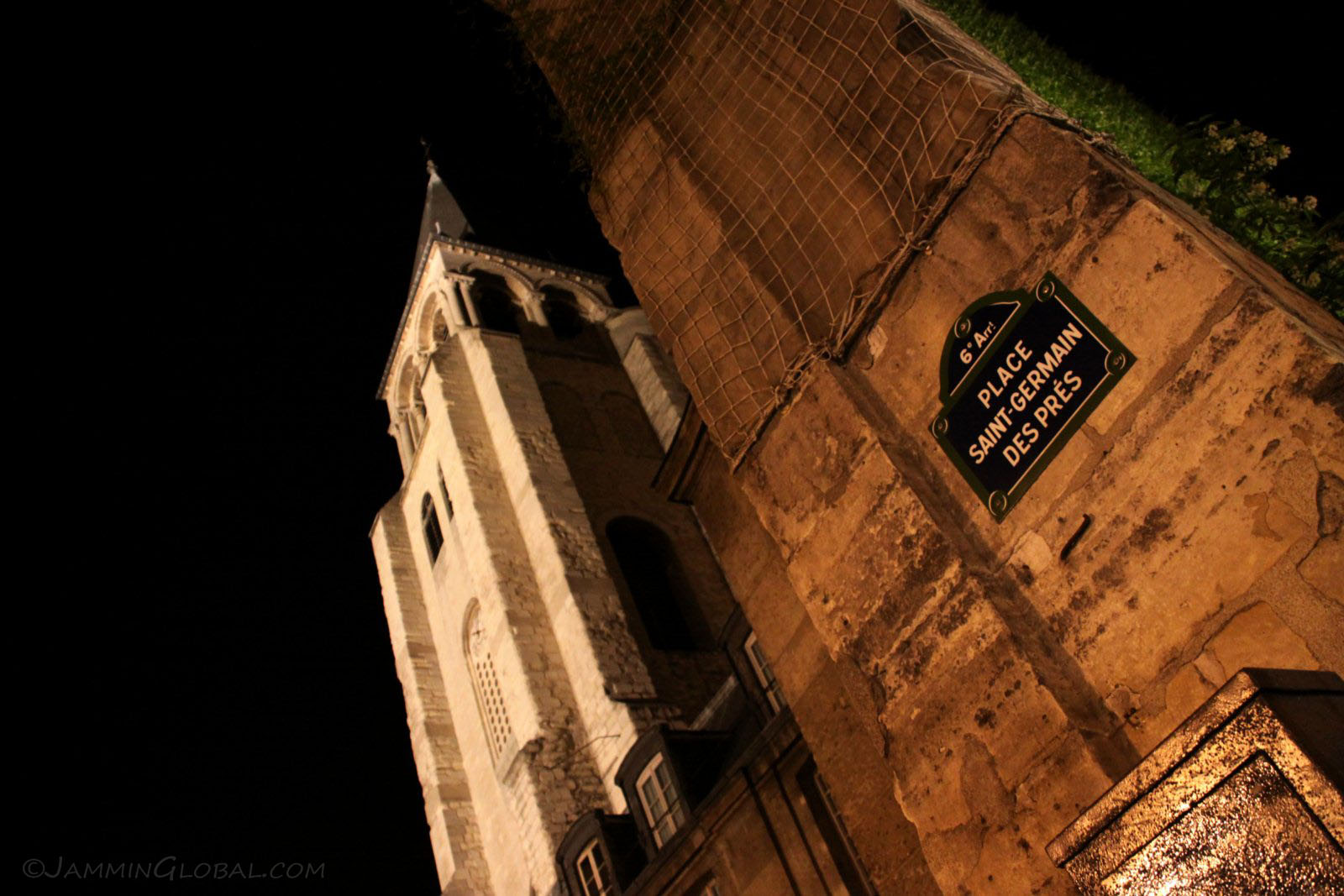
The abbey of Saint-Germain-des-Prés, the resting place of the great rationalist René Descartes (1596-1650), the father of modern philosophy, popularly known for his statement "Cogito ergo sum" (I think, therefore I am). He is highly influential as he was the first thinker to frame the natural sciences in a philosophical framework. His ideas on dualism (that the mind and body are separate) are still being debated today and continues to influence thinkers. He put forward the idea of methodological skepticism, where by doubting the truth of all beliefs, one could arrive at the beliefs that were certainly true. He is also the inventor of the Cartesian coordinate system and founded analytic geometry. In the 20th century, this area around Saint-Germain-des-Prés was home to the existentialist movement with the likes of Jean-Paul Sartre and Simone de Beauvoir frequenting the nearby cafes.
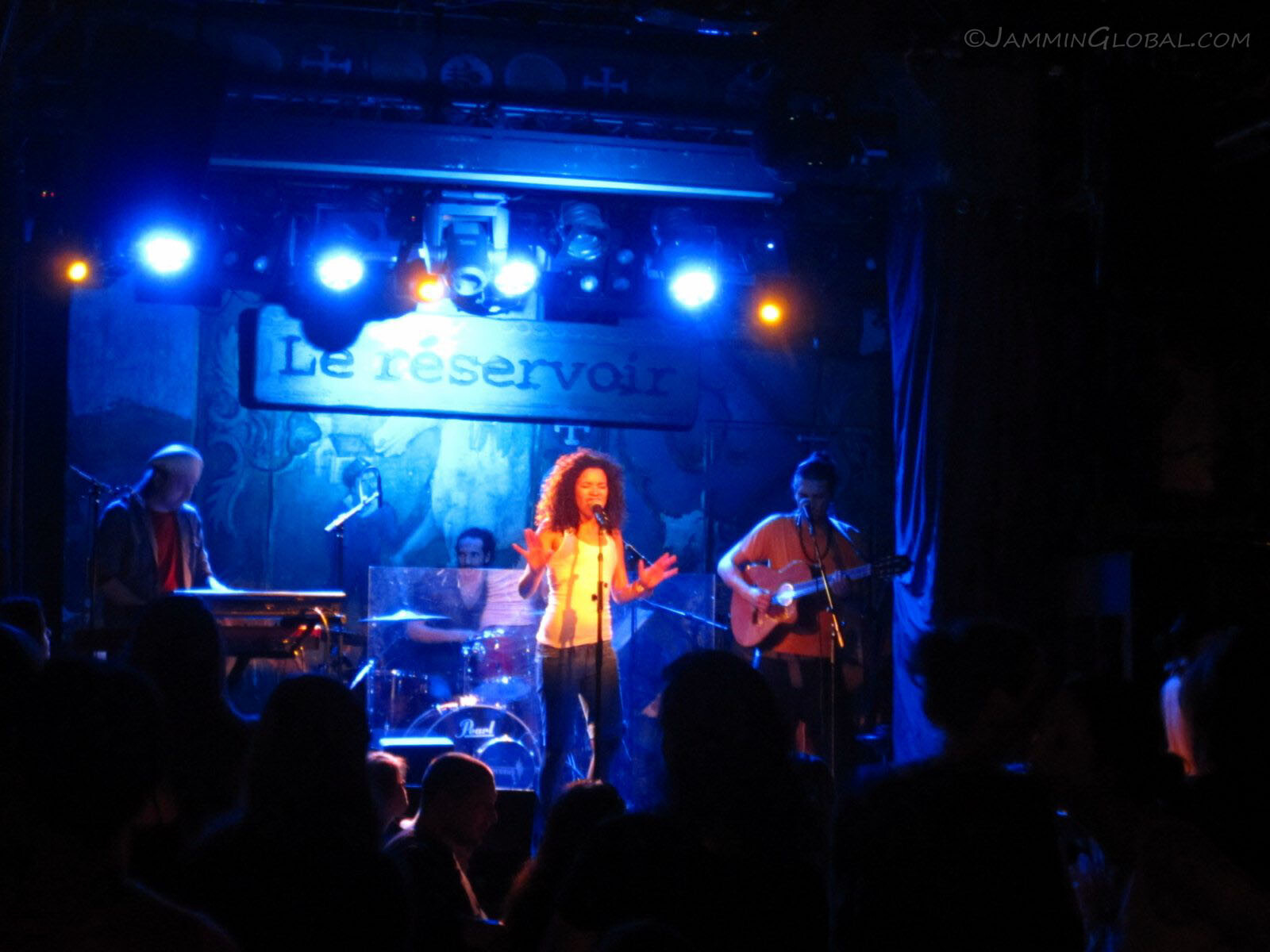
A night out in the 11th arrondisement, catching a performance of a reggae-bossa band at Le Réservoir.
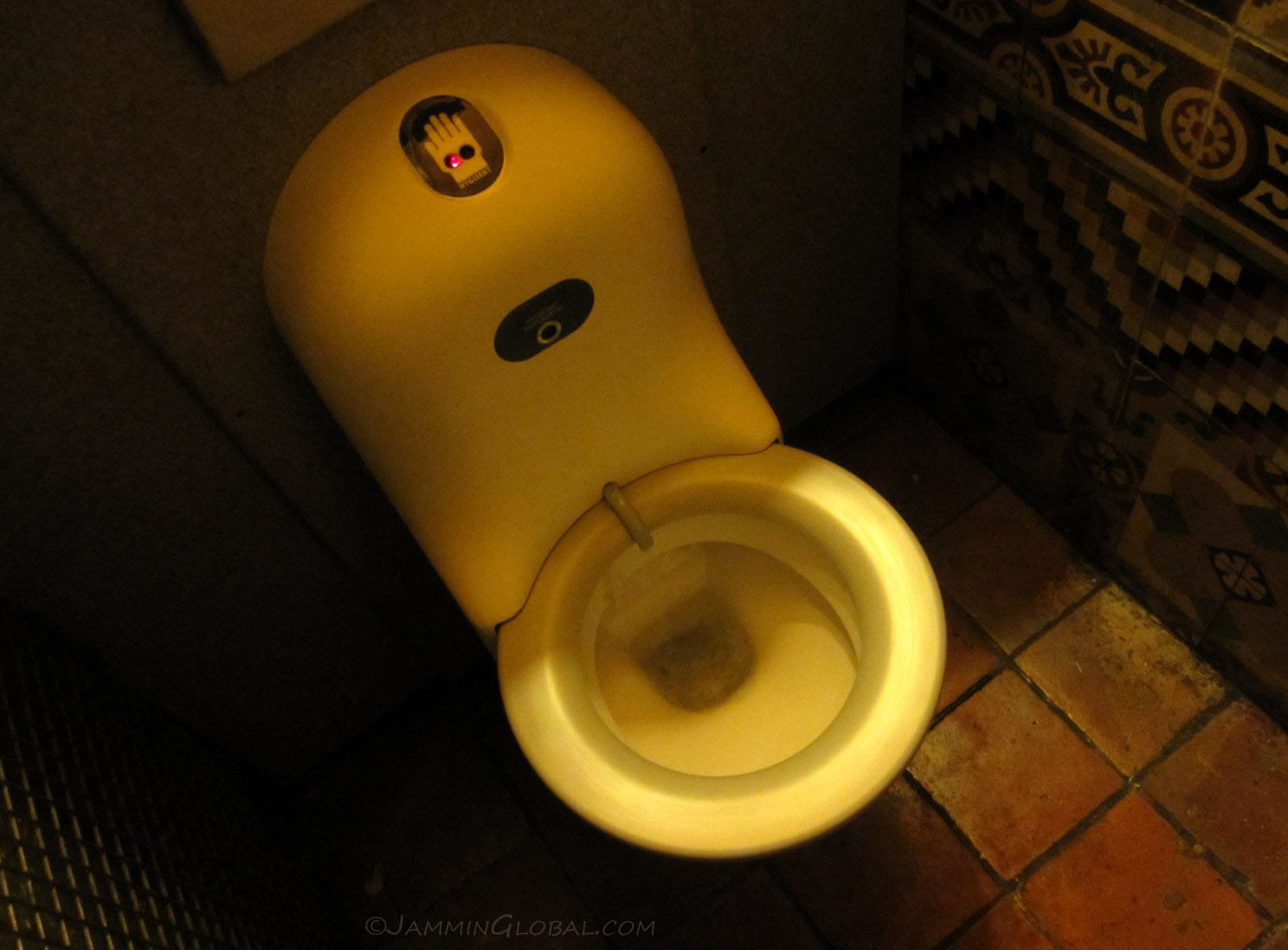
They had the coolest toilet there. To ensure the seat was clean and hygienic, upon flushing, the seat spun under the central band that had a flow of water on one side and a squeegee on the other side. Brilliant.
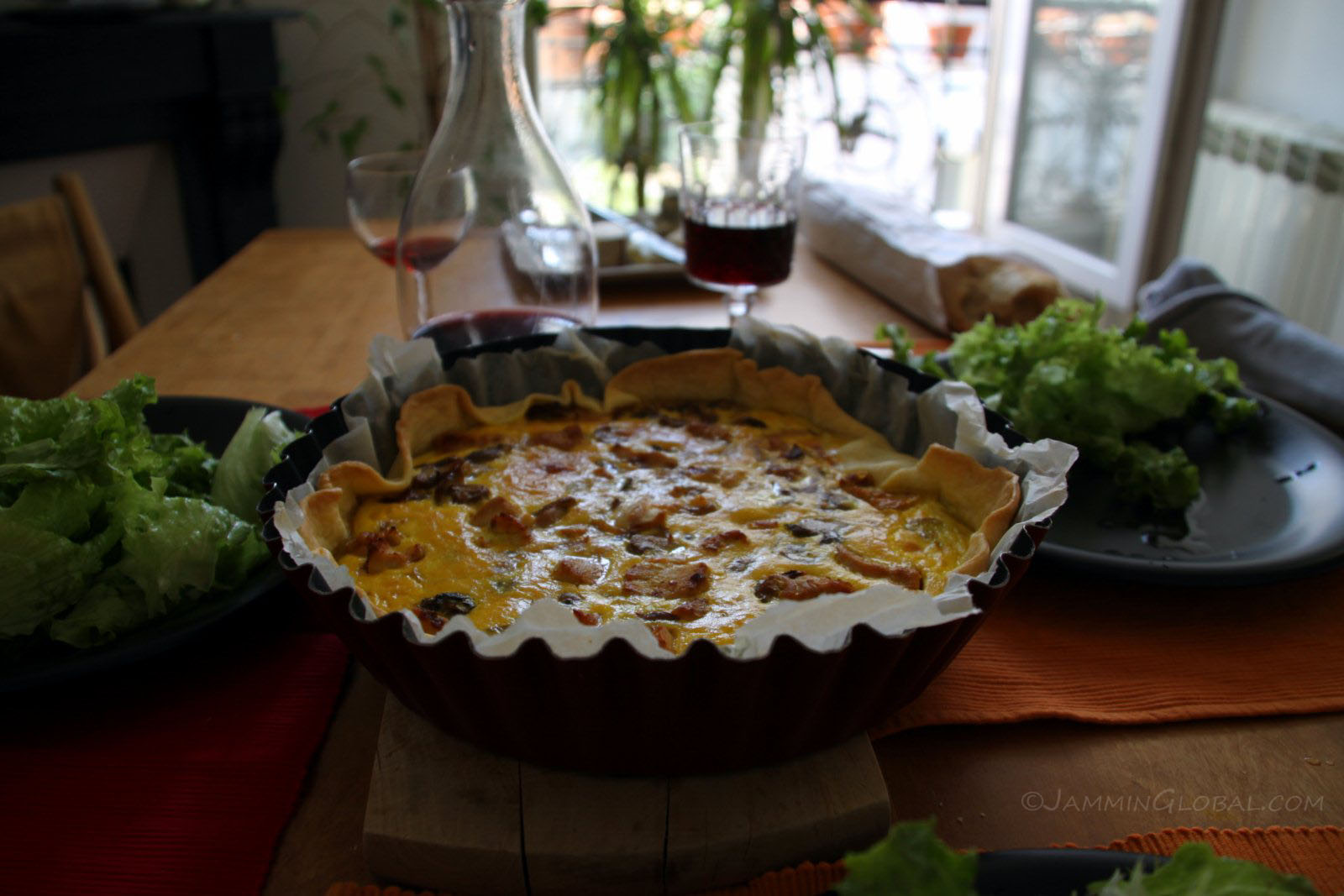
For a Sunday brunch, Uwe prepared this Chicken Quiche, using mushrooms, onions and Thai curry paste. Super tasty.
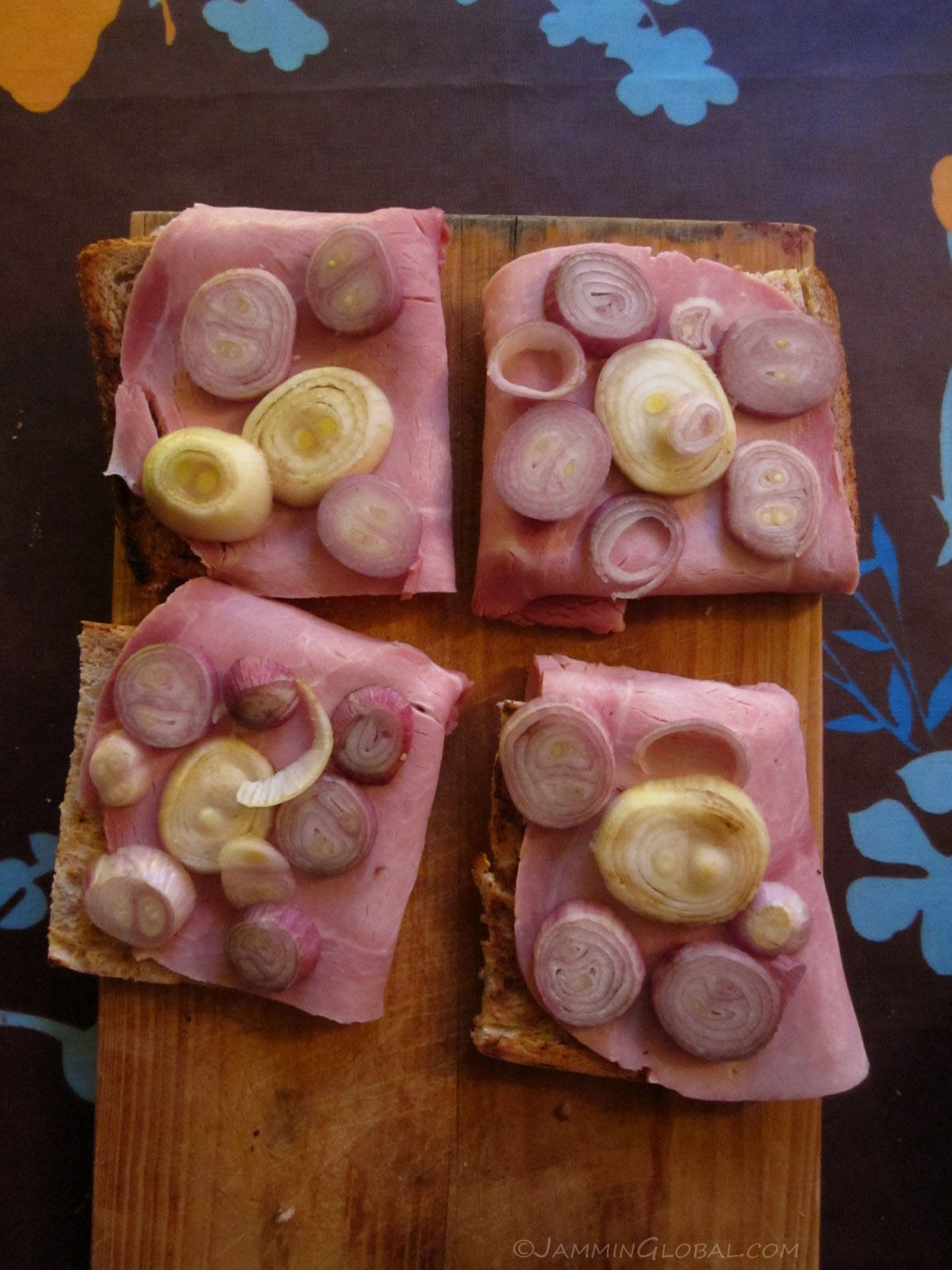
Uwe was heading for a dinner to a friend's house and invited me to come along.
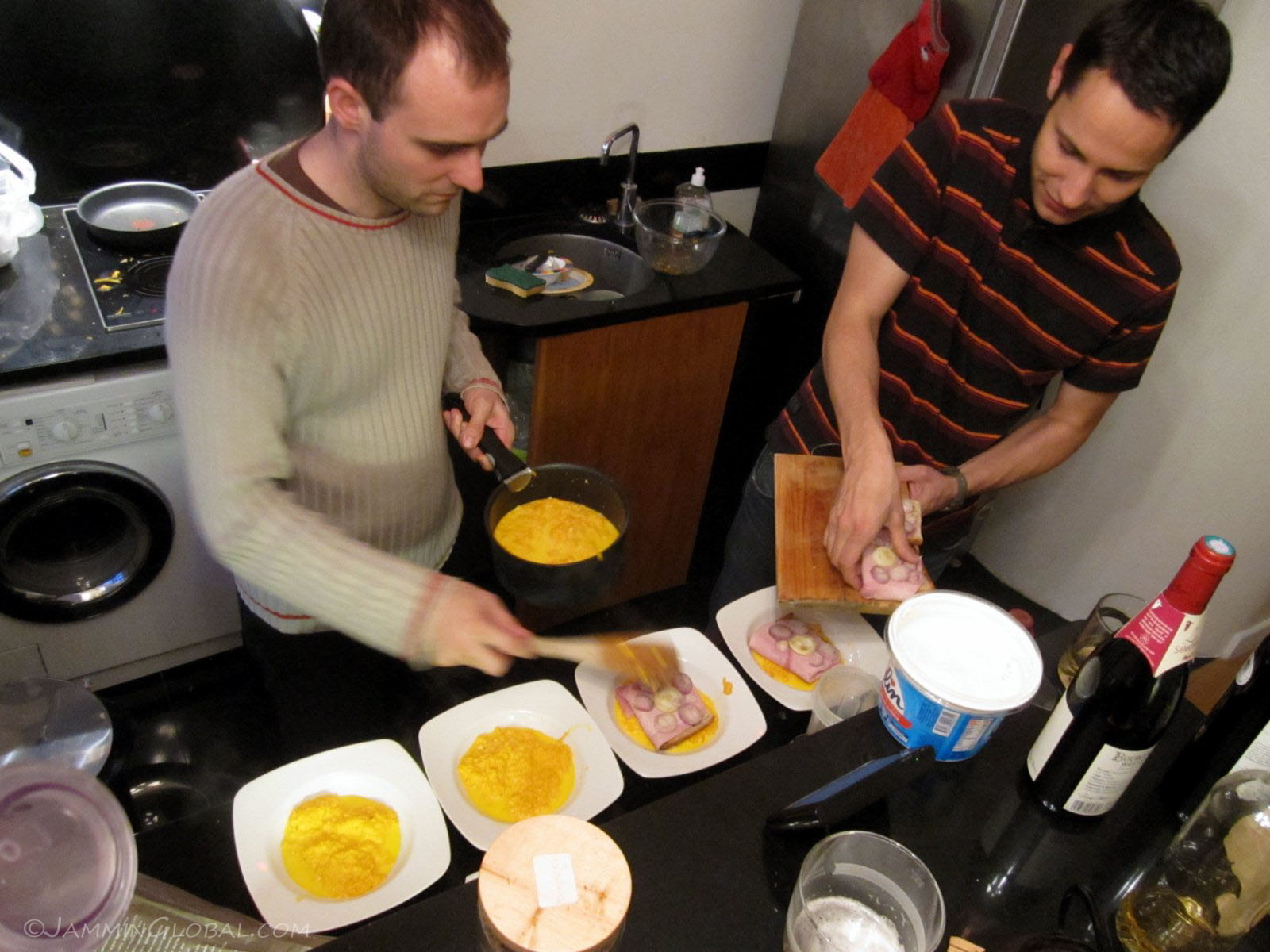
Xavier is quite the cook and he prepared this unique dish called 'Welsh' that comes from the northern state of Nord-Pas-de-Calais on the English Channel. A lot of cheddar cheese is melted with some amber beer and then the slices of bread (from above) with ham and onions are placed in the middle of the dish and smothered with more melted cheddar and then it's placed in the oven. The name comes from the 17th century when the term 'Welsh' was applied to mean anything of low quality as this dish was traditional eaten with rabbit meat, considered a substitute for other meats.
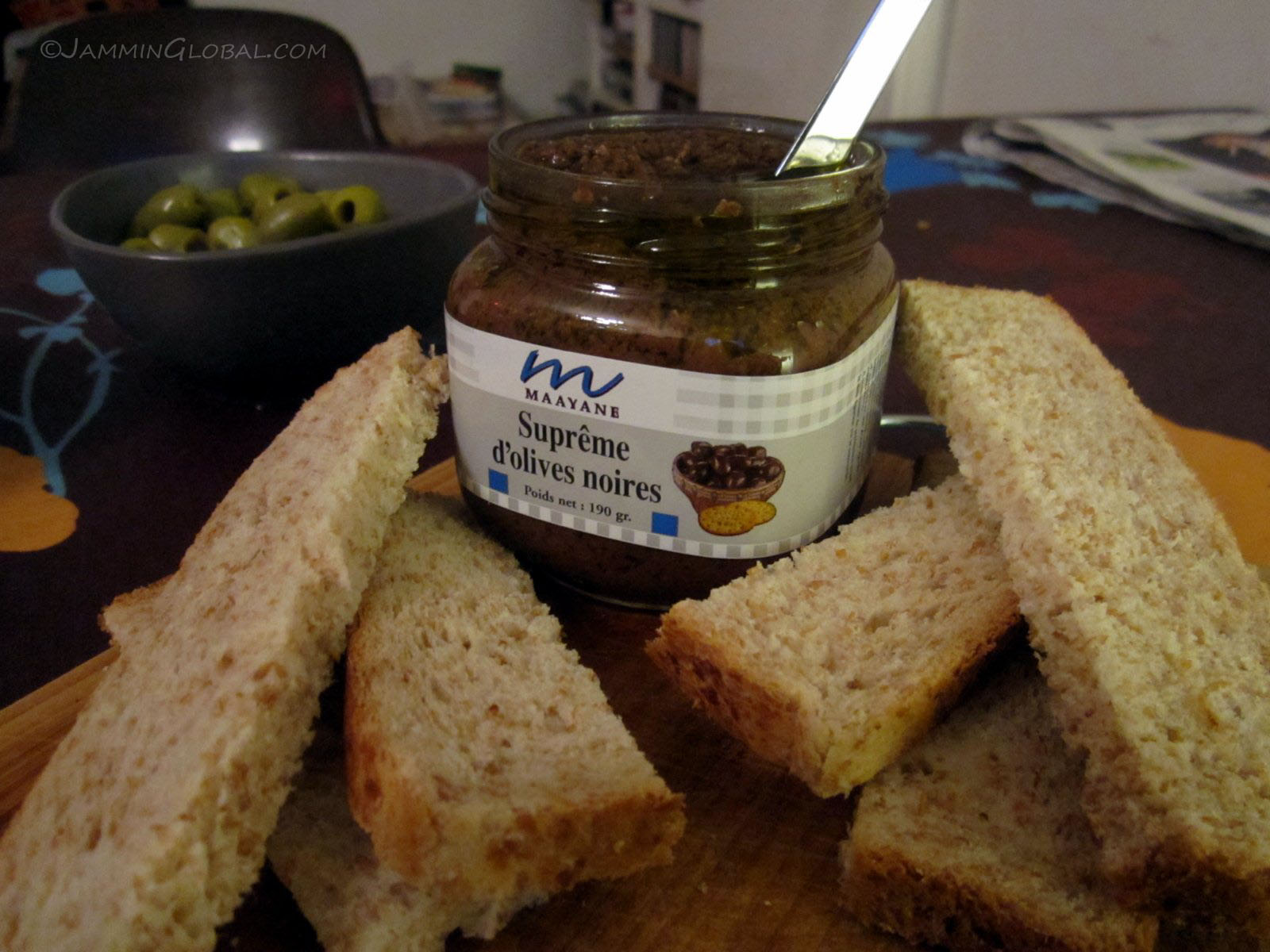
Some hors d'œuvres of black olive spread, while we waited for the Welsh to bake.
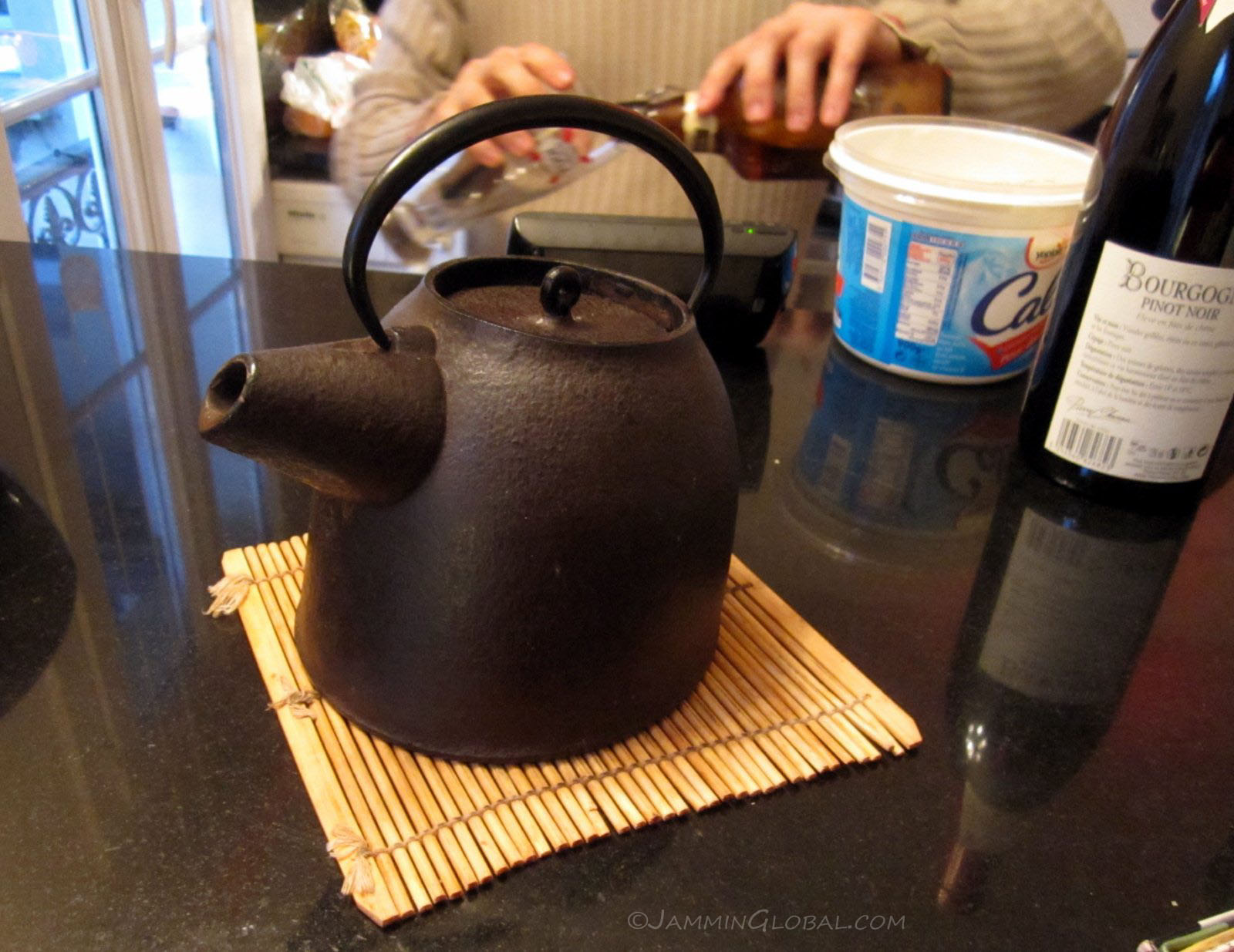
Xavier's super heavy cast iron tea kettle.
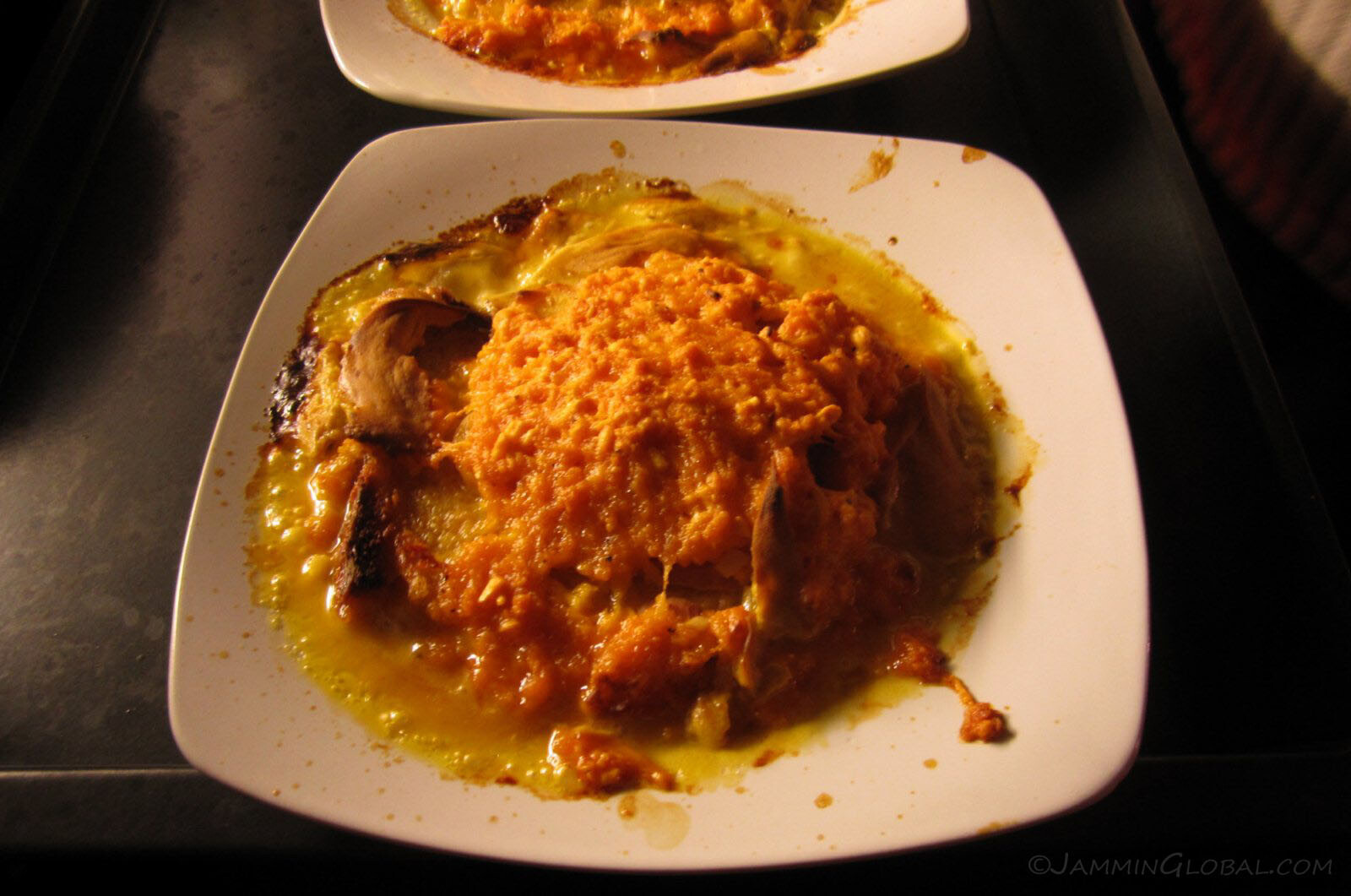
The Welsh, all baked up.
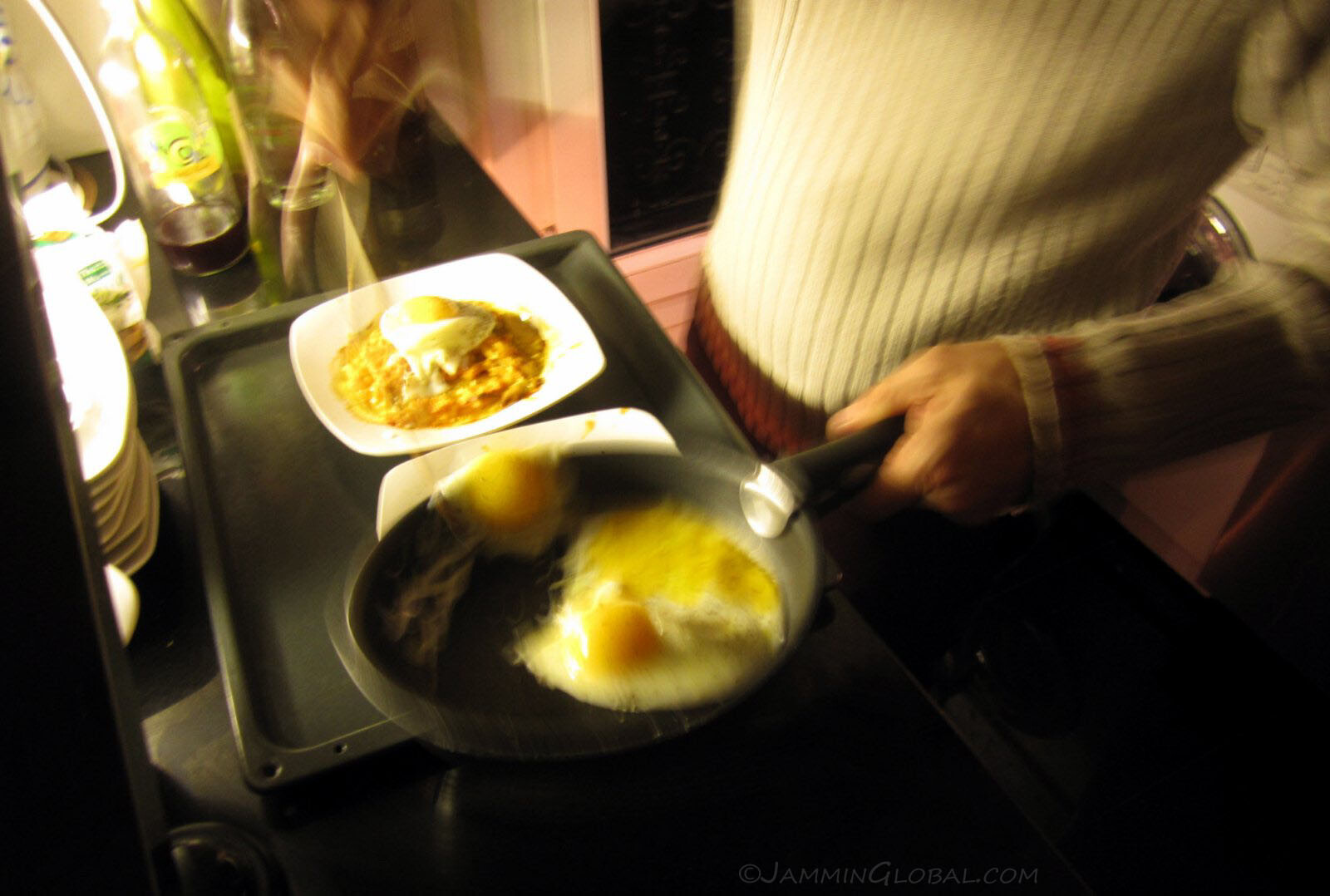
And to top it off, it's crowned with a fried egg. Mmm, tasty, but maybe not so healthy French food.
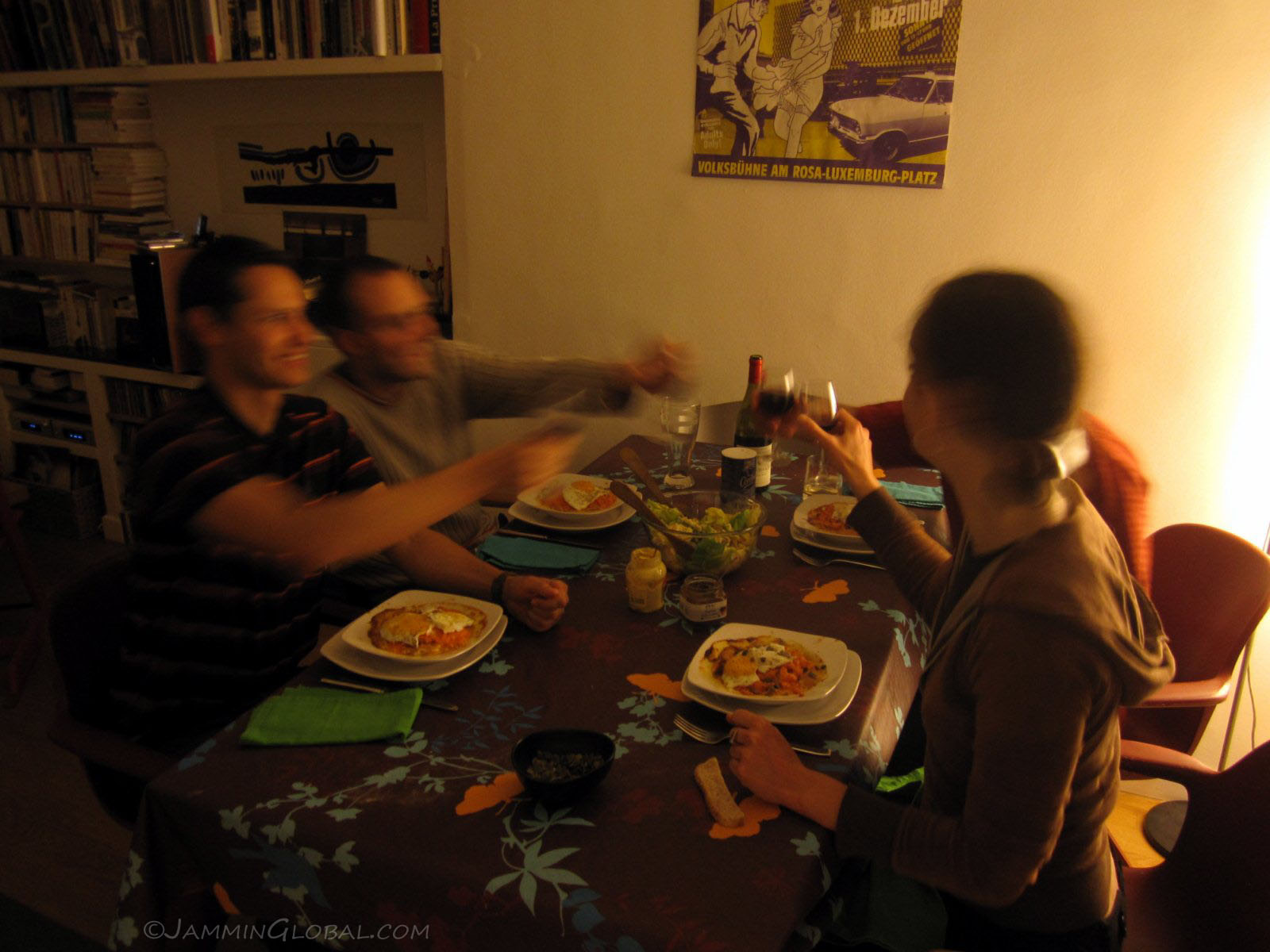
A toast before dinner with Xavier and his wife, Maria.
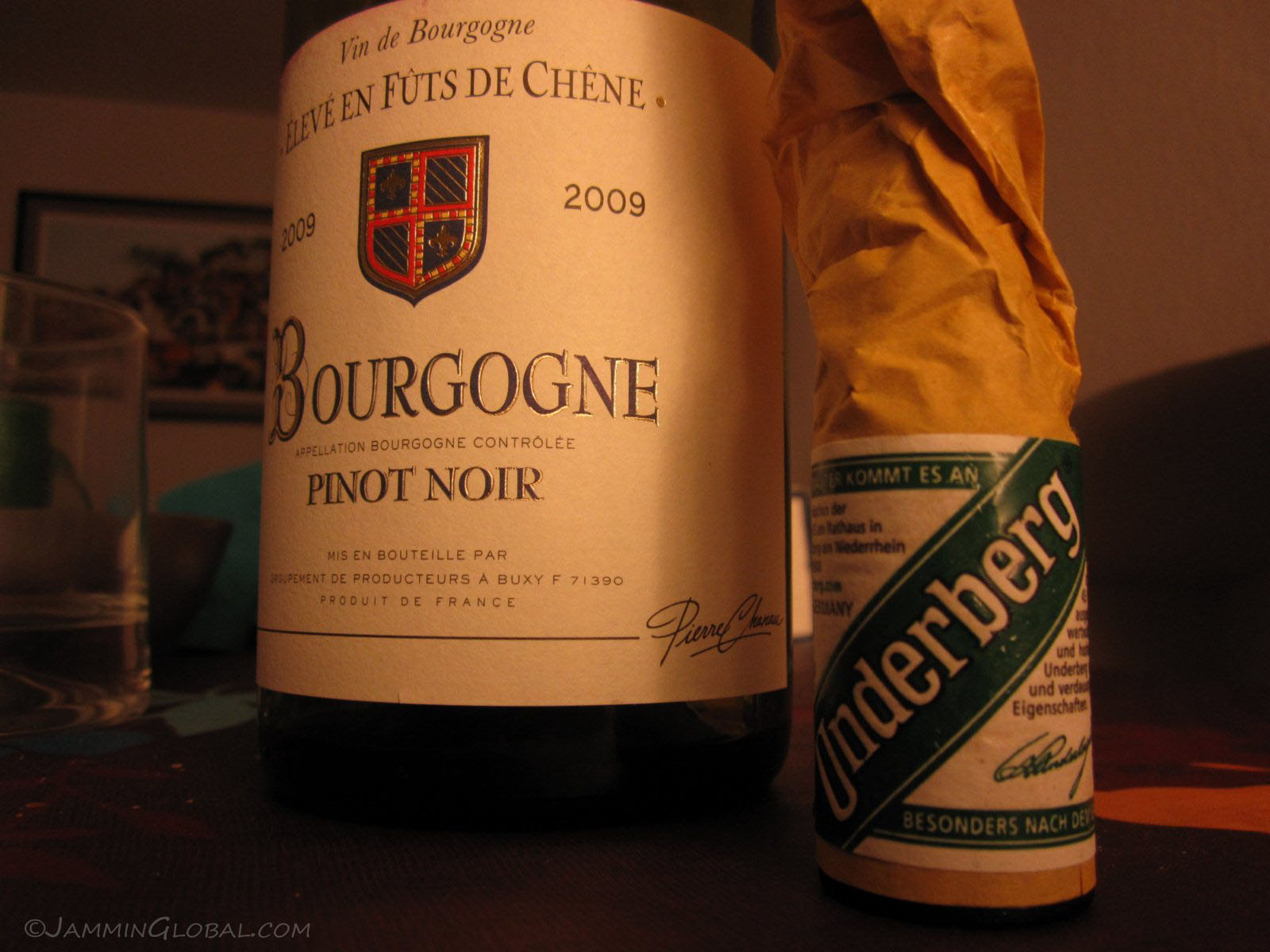
After having some pinot noir wine with the heavy dinner, we finished it off with the digestif bitter of Underberg, made from a wide variety of herbs and produced by the same family since 1846 in Germany. It was kept frozen and went down well.
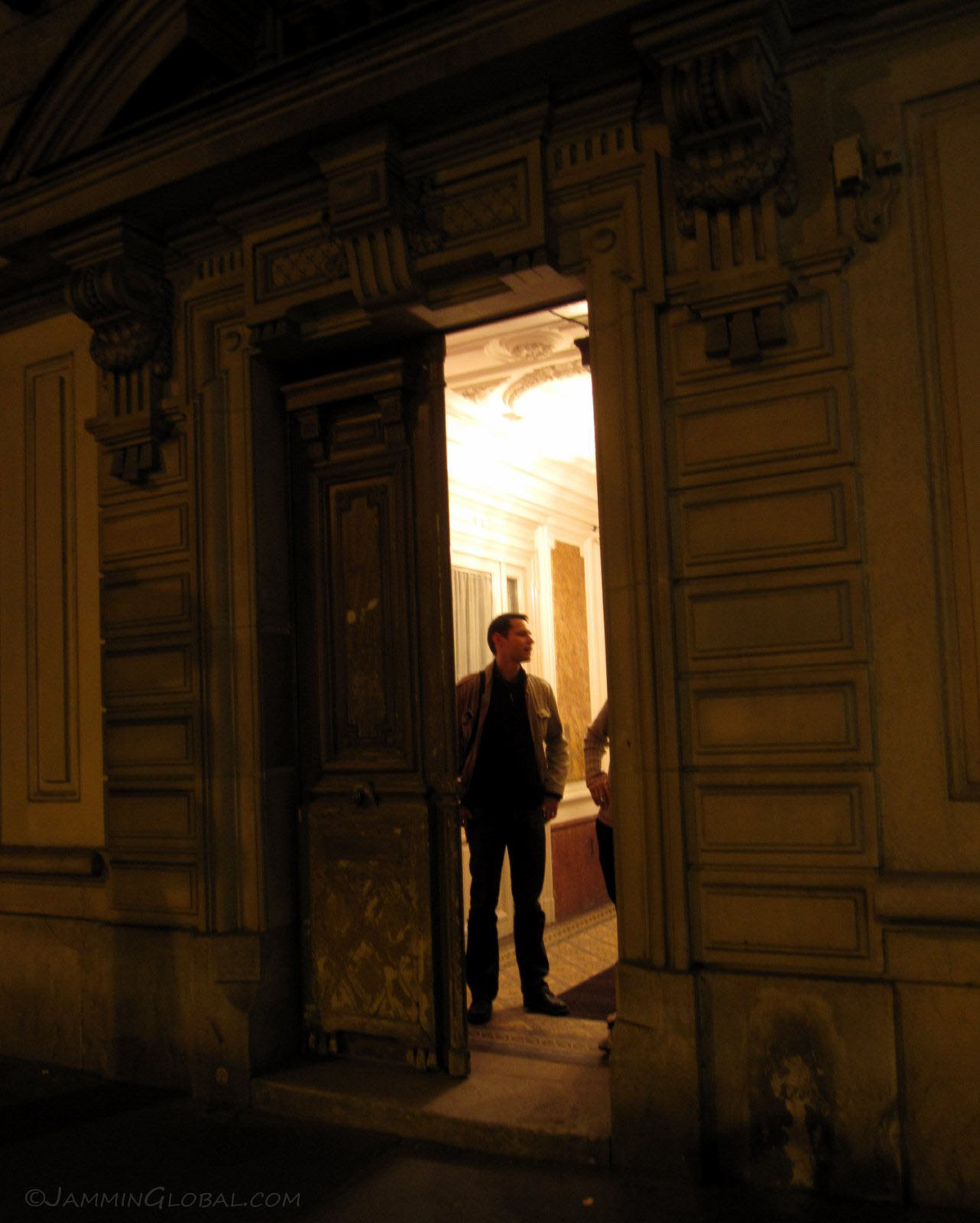
Saying goodnight to Xavier after a nice evening. Almost every doorway in Paris is decorated quite elaborately.
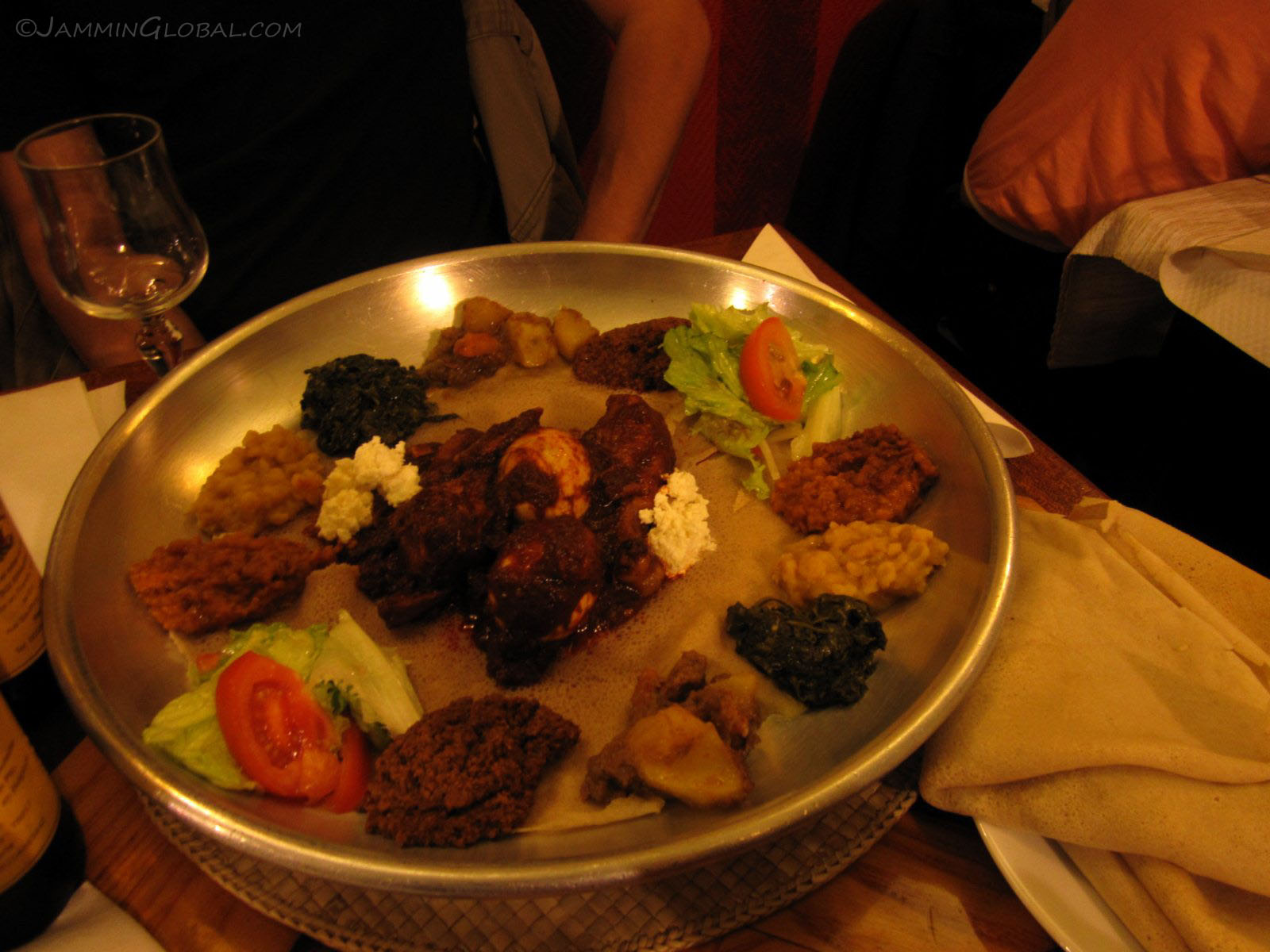
Another evening, after talking about East Africa a lot, we decided to head out for some Ethiopian food, to give Uwe a taste of what it was like and I told him I'd report back once I got there on how close this was to the real thing. A variety of wat (stews) served on top of injera, a sourdough flatbread. The meal is eaten with your hands (only your right hand, mind) and everyone eats from the common dish.
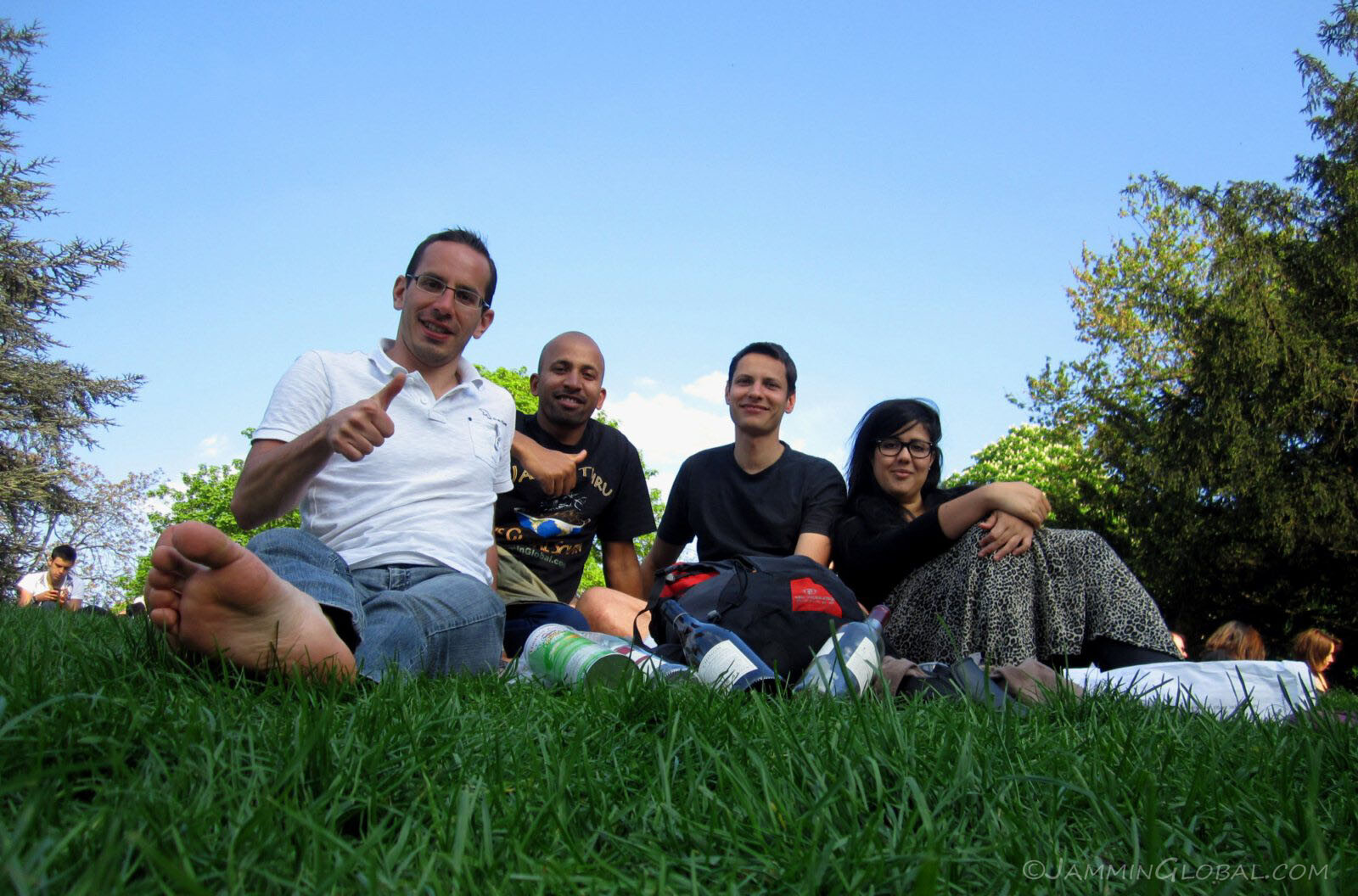
On a beautiful Sunday afternoon we headed out to Parc des Buttes Chaumont for a picnic with Christophe and Vicky. Good conversation over bottles of wine, lots of cheese and andouille sausage.
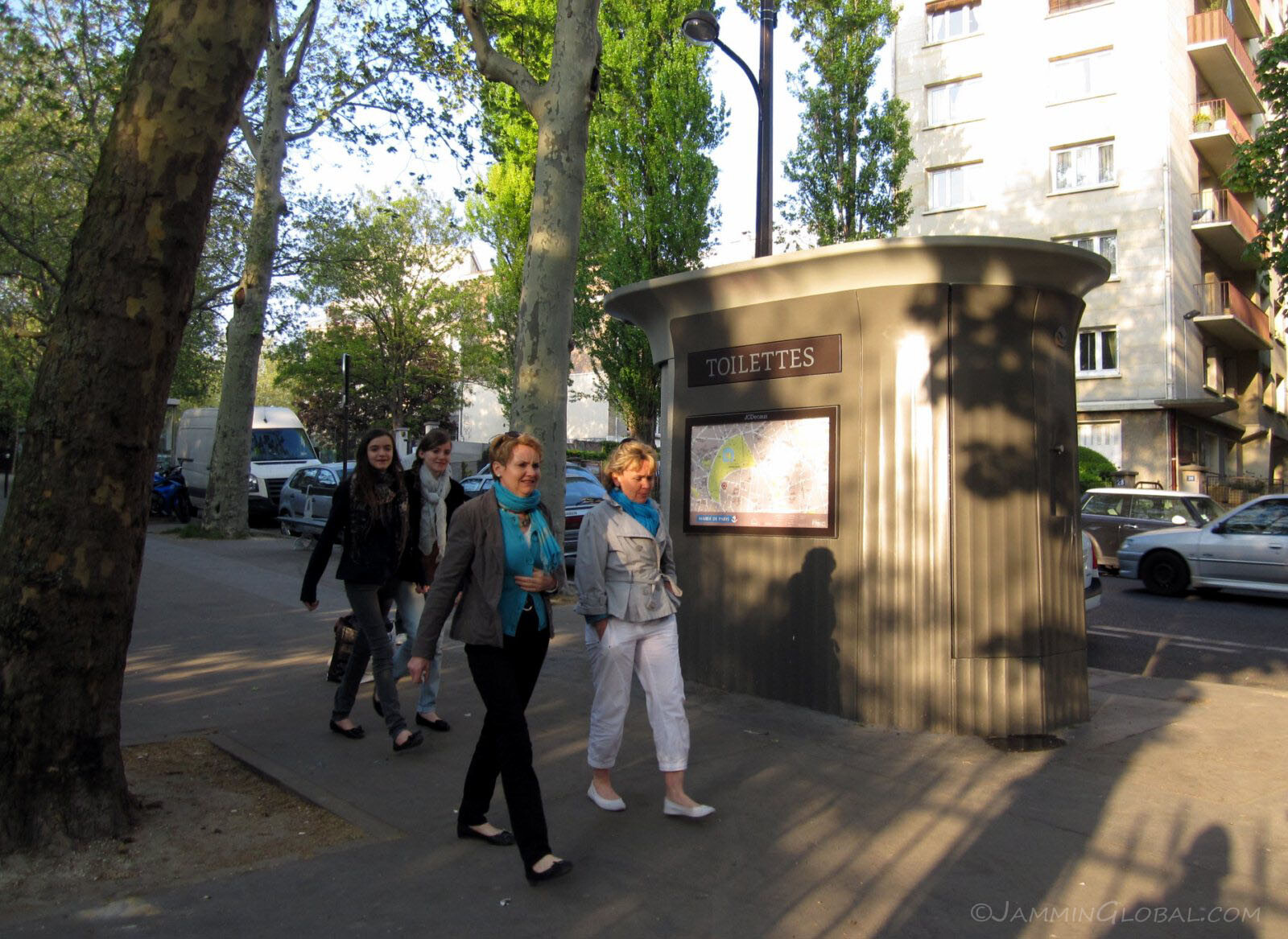
Clean, free, public bathrooms.
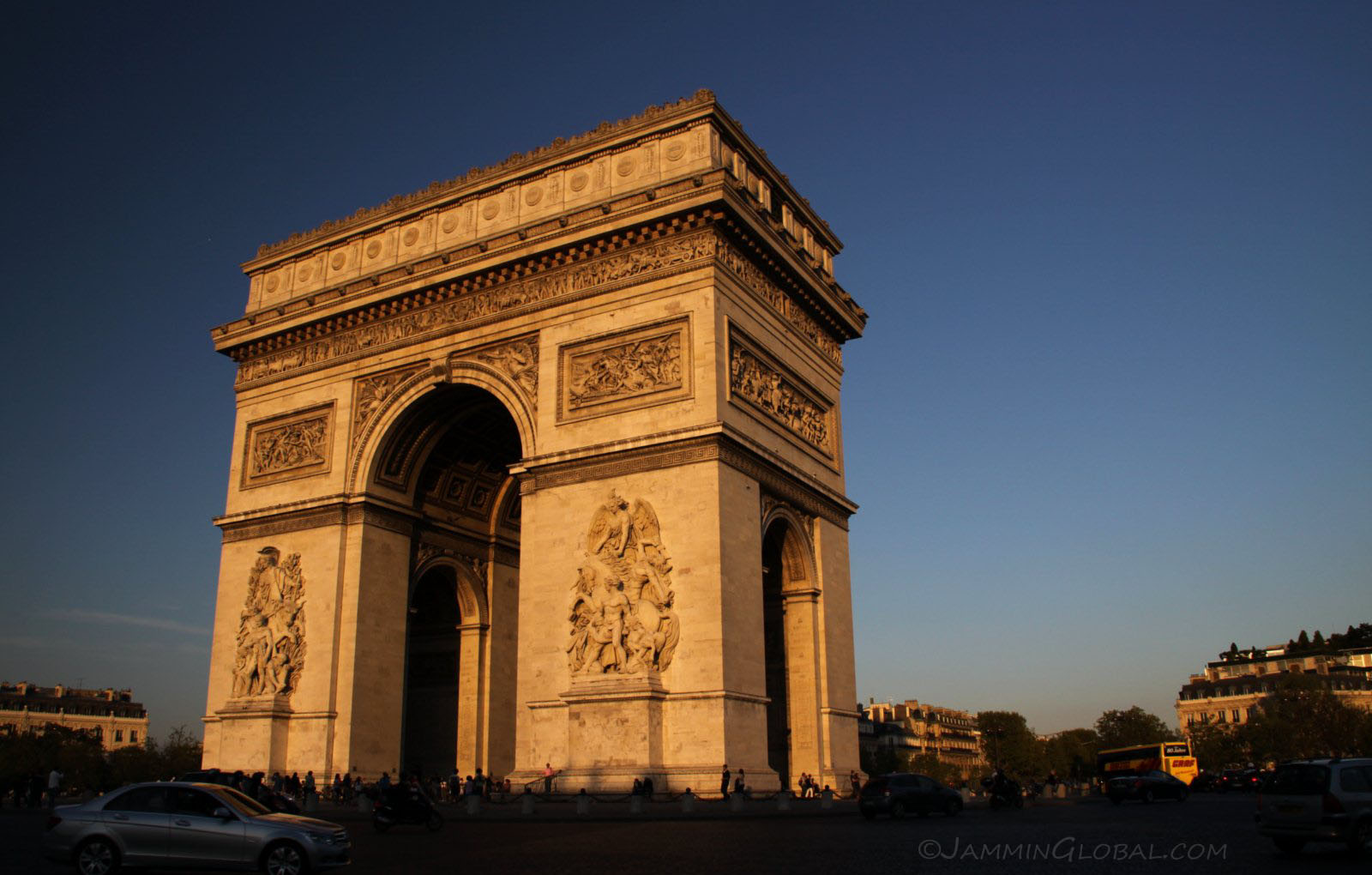
And last, but not least, the grand monuments of Paris: The Arc de Triomphe, inaugurated in 1836, to honor all those who fought and died in the French Revolutionary and Napoleonic Wars. It was designed by Jean Chalgrin with strong patriotic symbolism and set the tone for future public monuments. In the center lies the Tomb of the Unknown Soldier, an eternal flame in memory of those who died and were never identified from the World Wars.
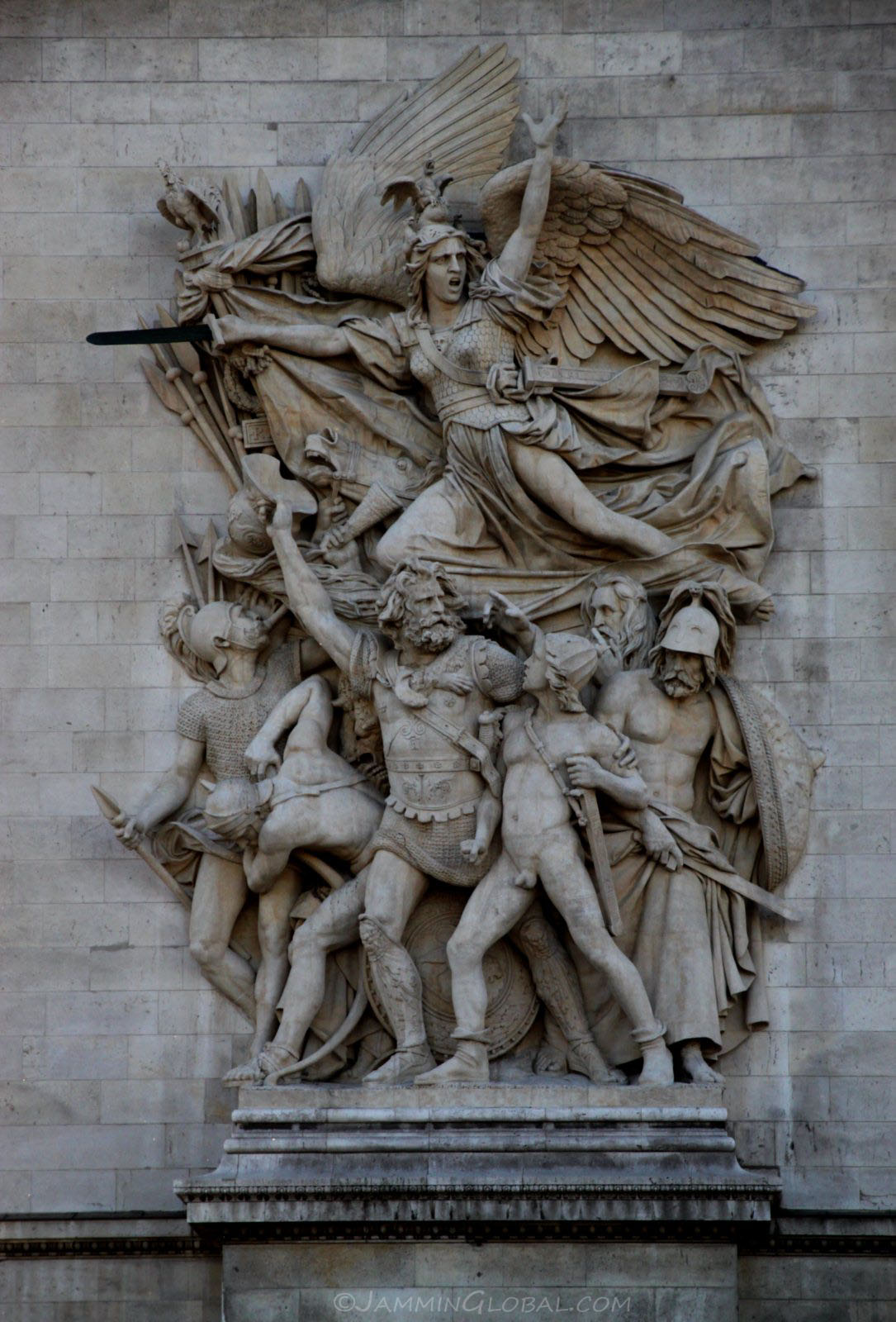
This is one of the four main sculptures around the arc titled Le Départ de 1792, also referred to as La Marseillaise (the name of the French national anthem). It was designed by François Rude and incorporates the idea of heroic nudity with nude French youths against bearded Germanic warriors in chain mail.

The arc sits on one end of the Avenue des Champs-Élysées, the center of Paris' high life, making it the second most expensive strip of real estate in Europe. The wide boulevard framed by clipped horse-chestnut trees make it easily recognizable.
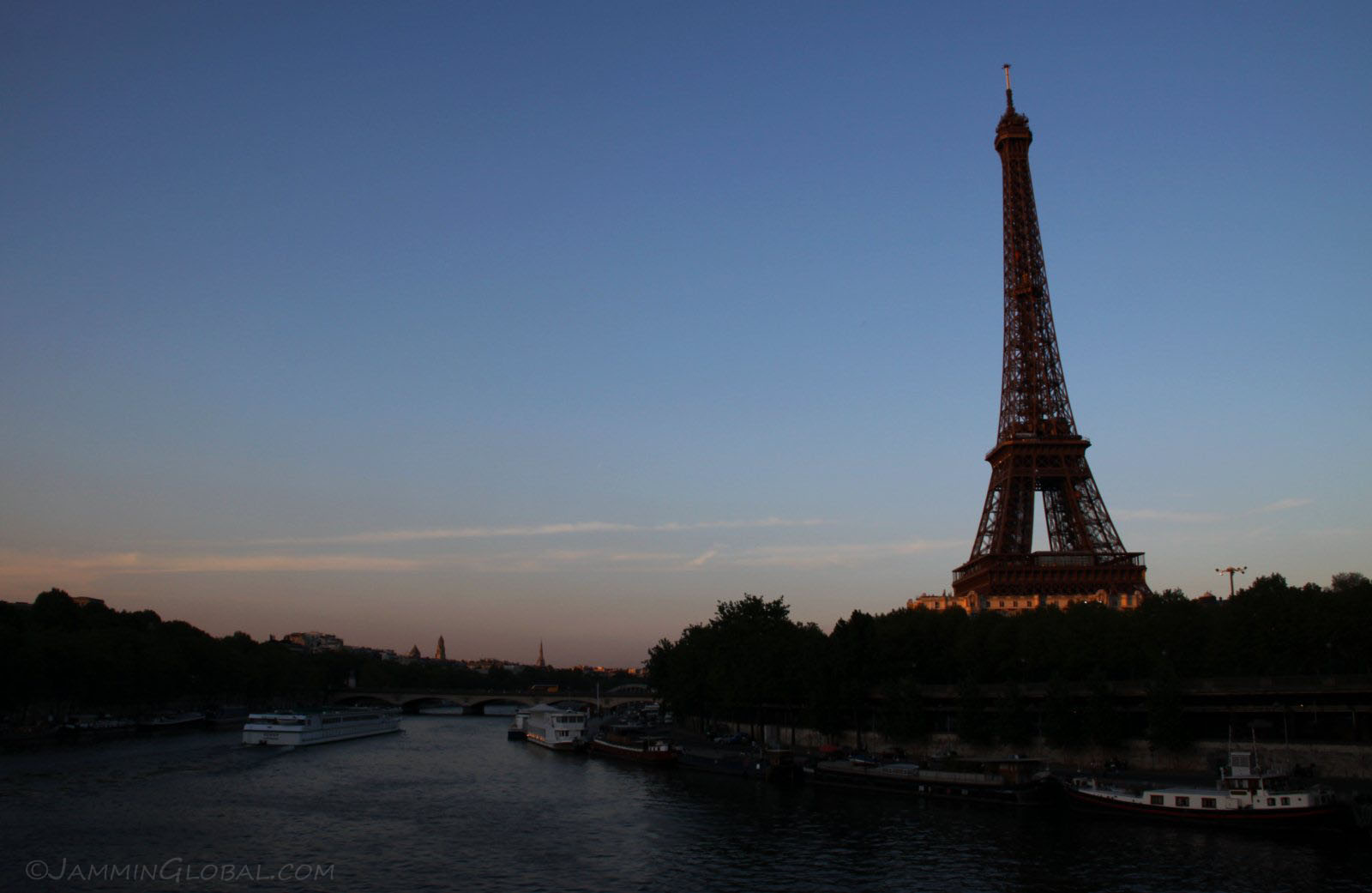
The Eiffel Tower overlooking the River Seine at sunset; the classic image of Paris and France. Built in 1889 for the World's Fair, it has become the most visited paid monument in the world.

Viaduc de Passy, a cast iron bridge crossing the Seine and being captured in many movies.
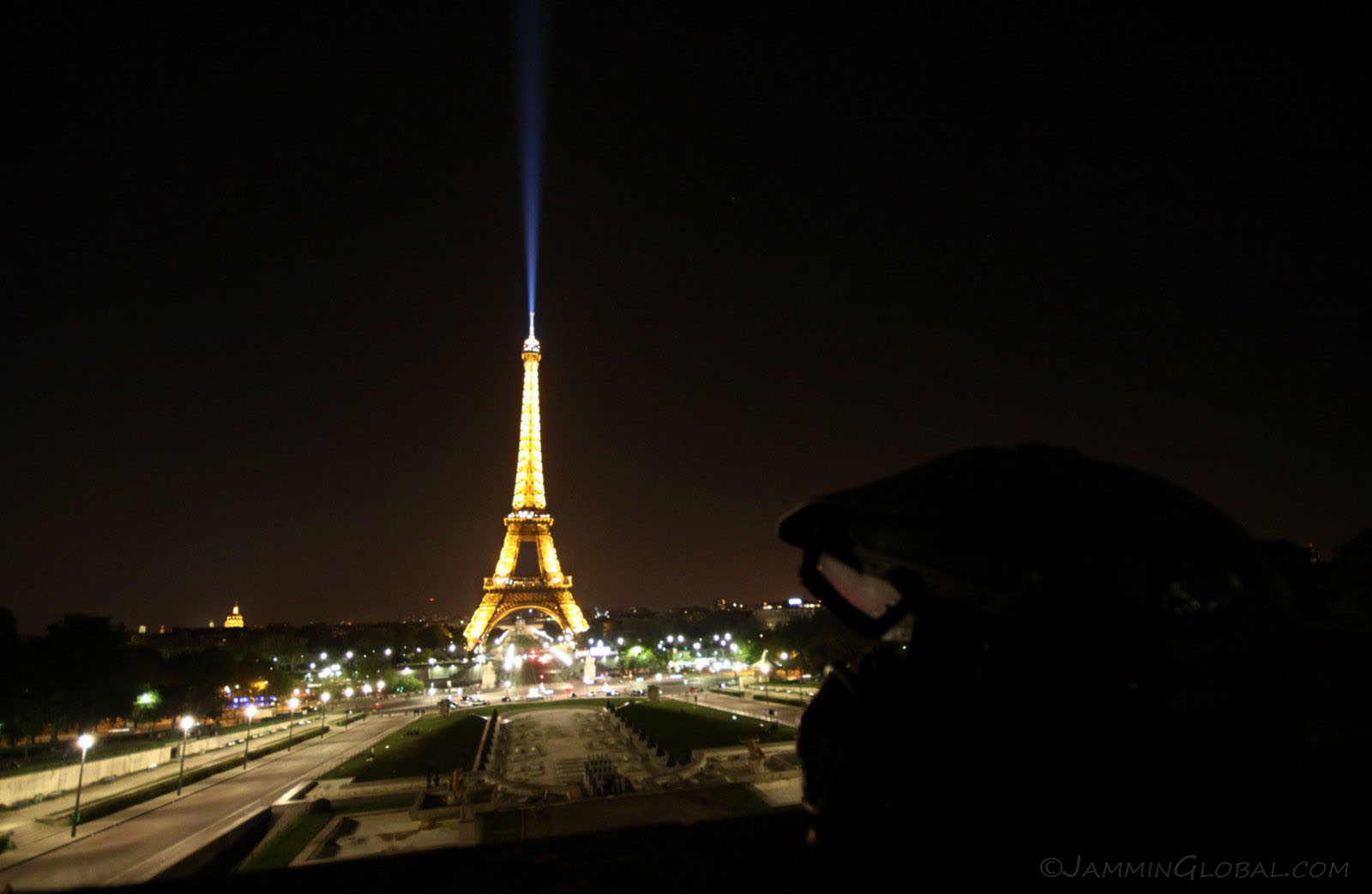
La Tour Eiffel at night from Trocadero. I caught the spinning beacon just as it passed dead center to appear like the tower was beaming a laser into space.
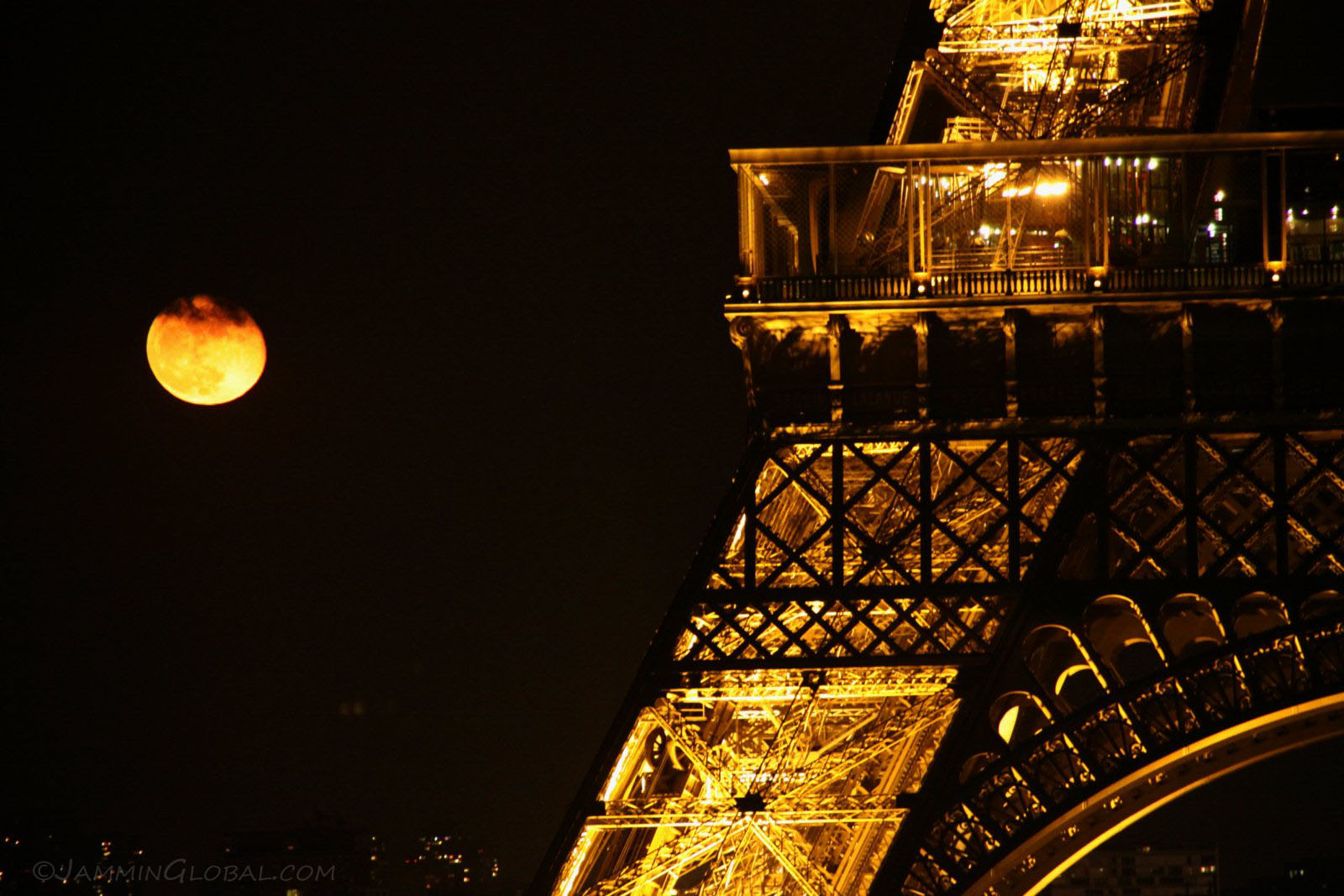
Catching the full moon as it passed behind the tower (this was a month after the super moon). The puddle iron lattice work of Gustave Eiffel showing through brilliantly with the night light.
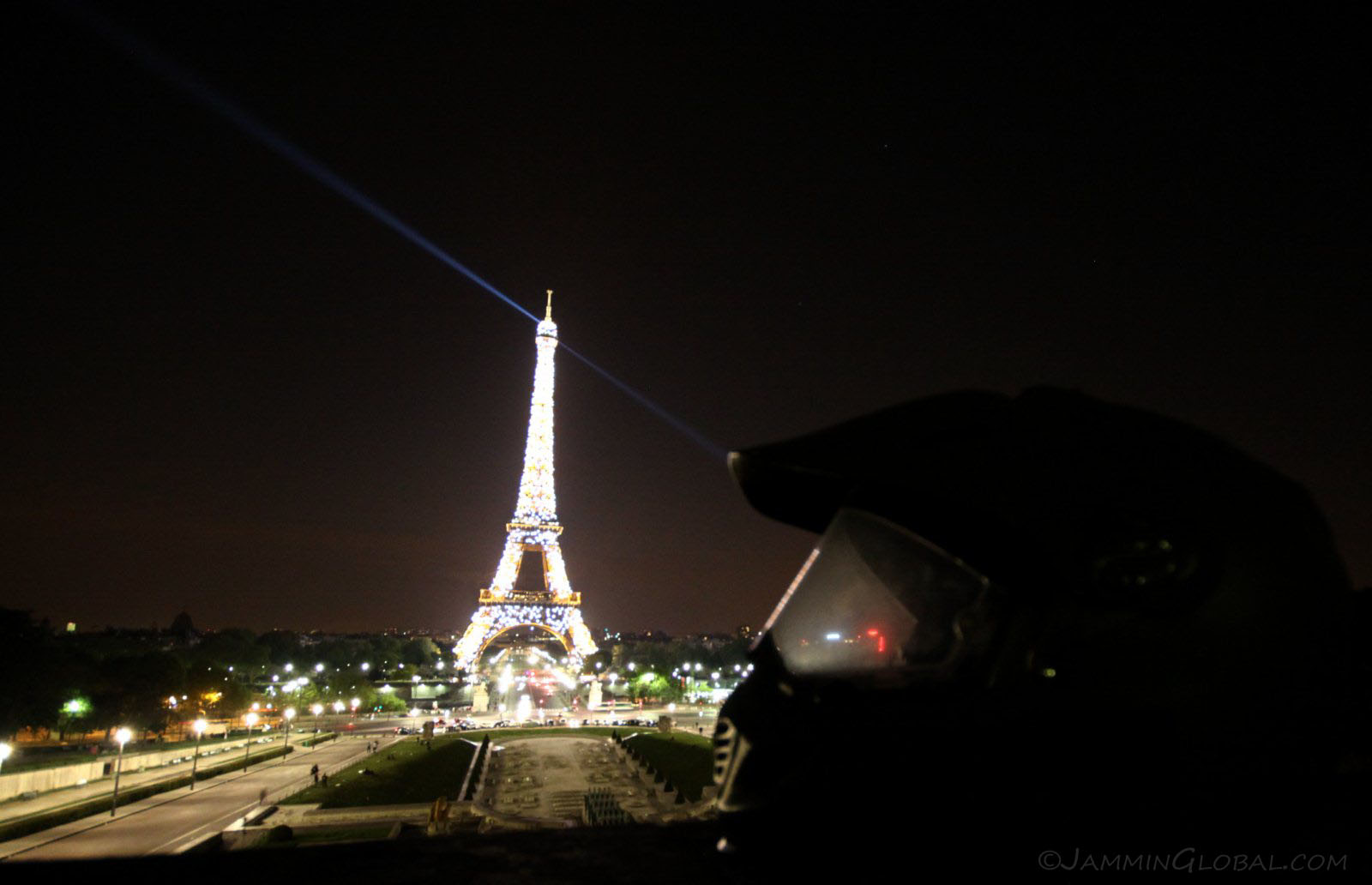
The pièce de résistance as the tower bursts into a dazzling, glittering show of light for about 10 mins every hour.
A grand way to end my month-long stay in Paris, the city that captivates. Being a major hub and influential city of the world, I'll definitely pass through again. I made some great connections during my time there and felt I got to taste a part of what it's like to be a Parisienne.
Next: Europe, Part 3: Across Germany into Prague
Previous: Europe, Part 1: Autobahn into Paris